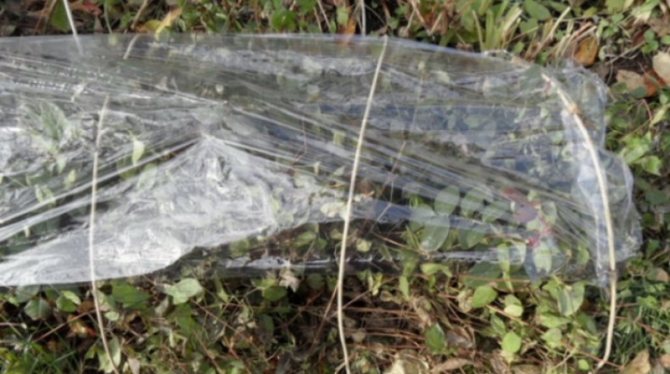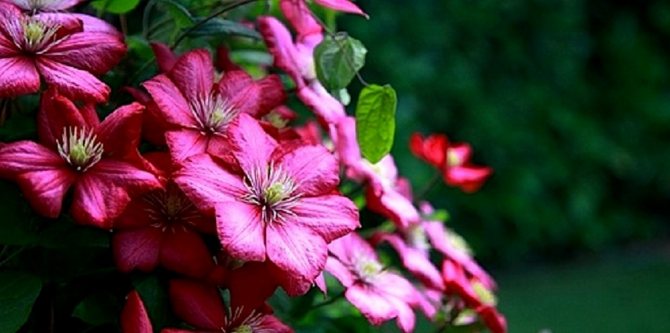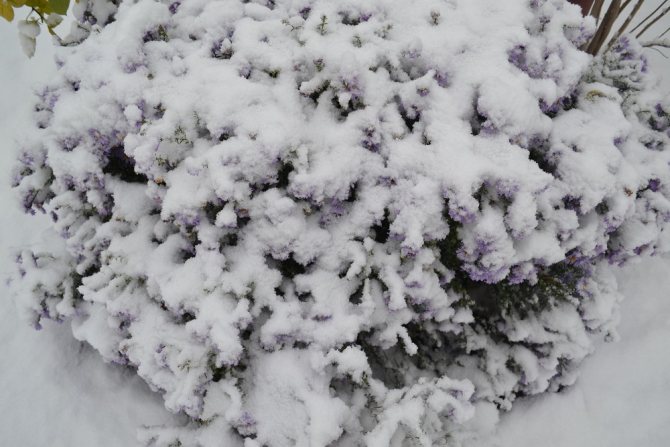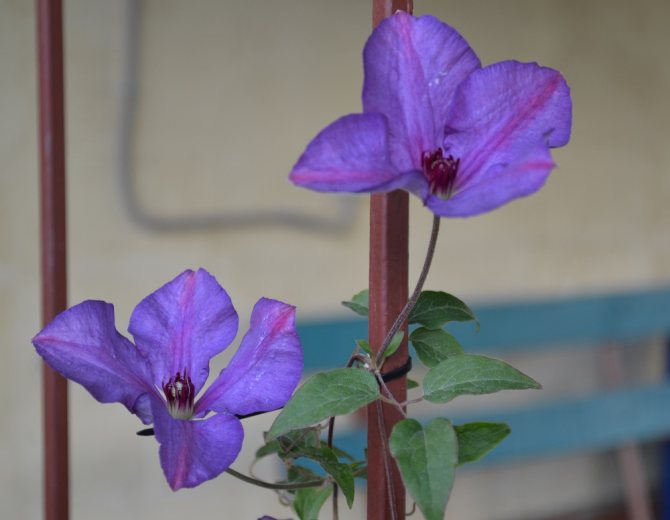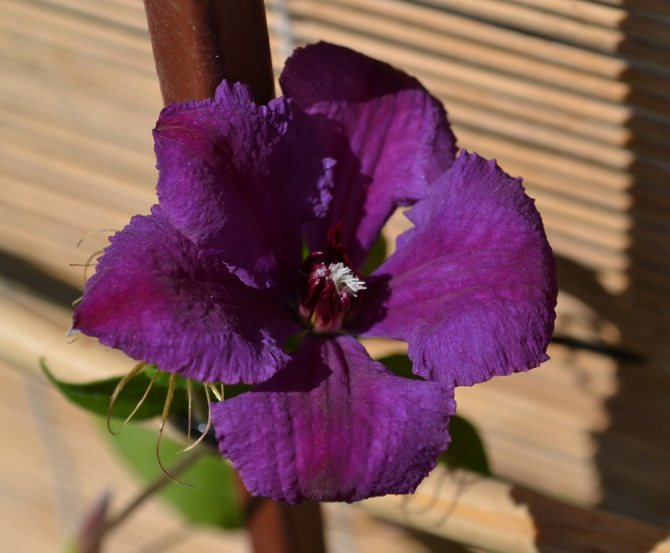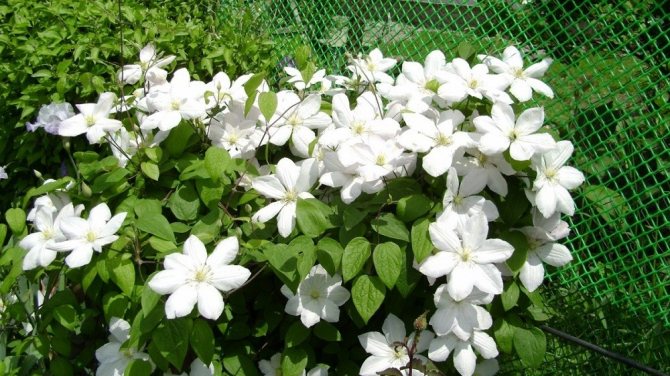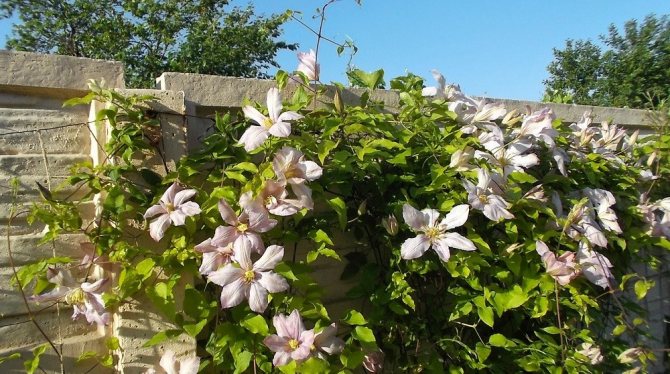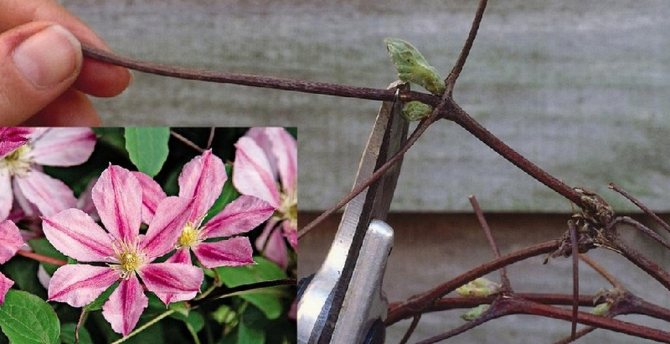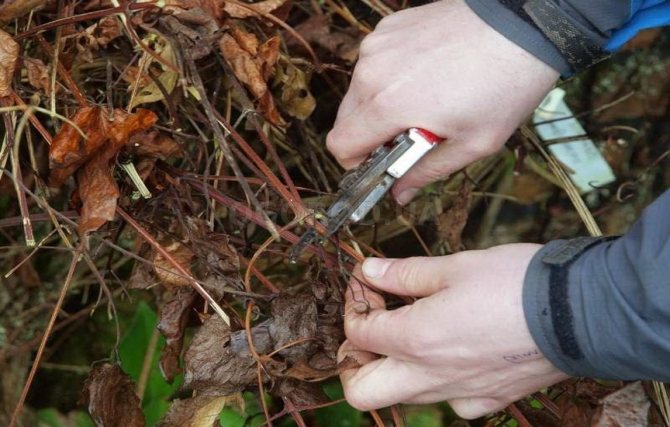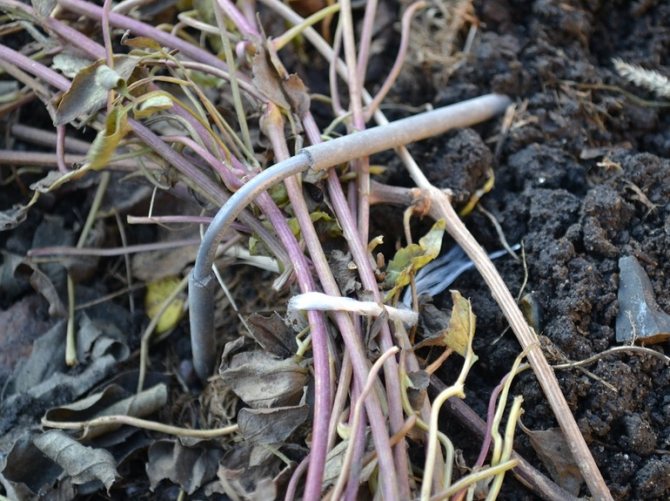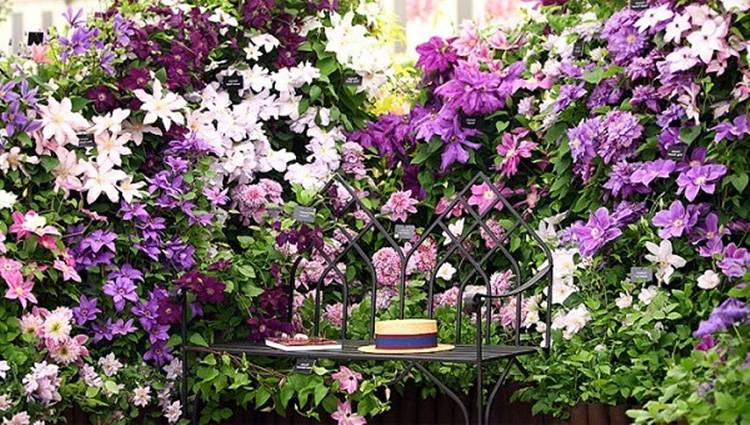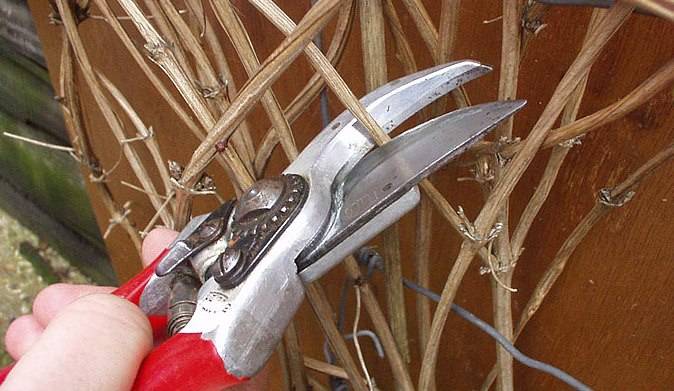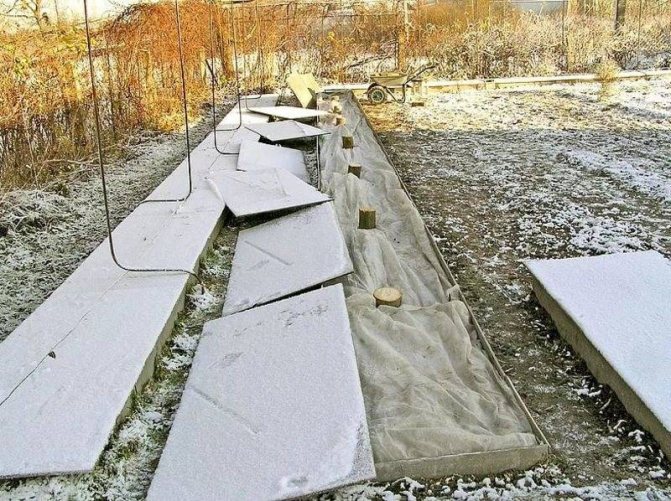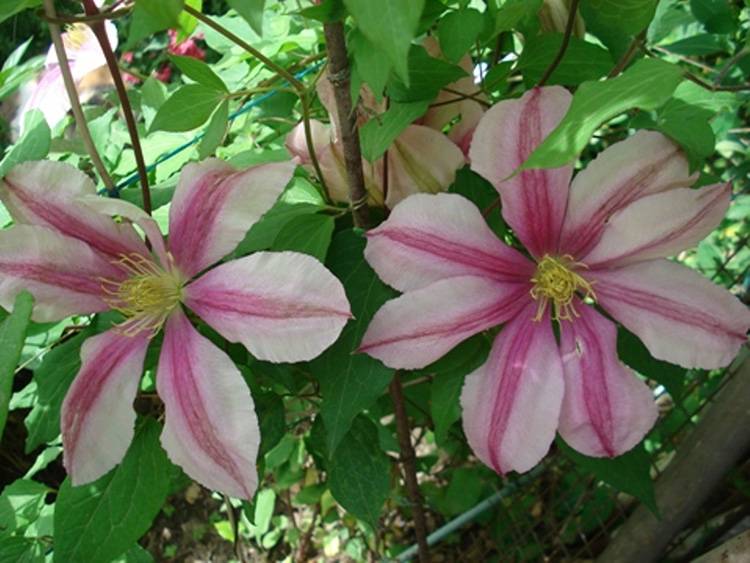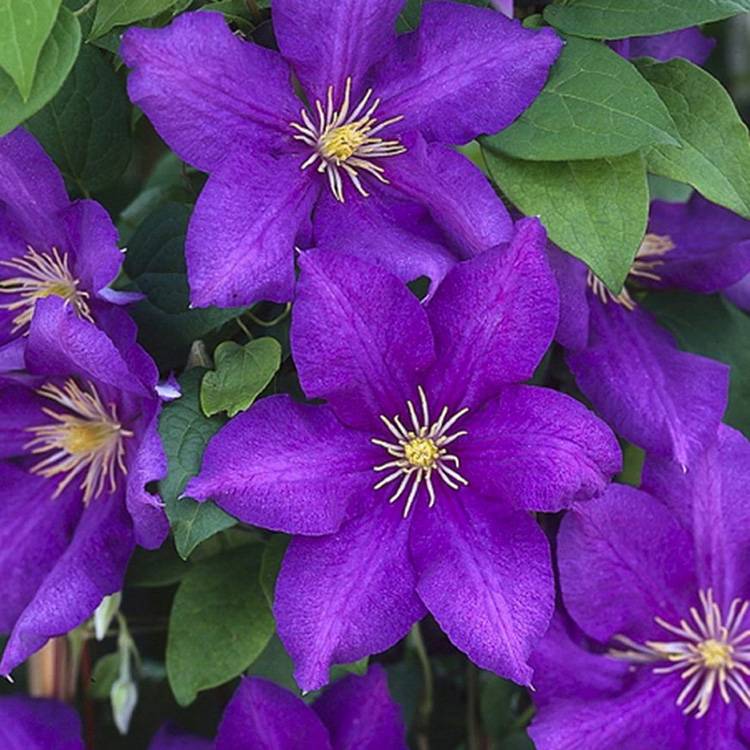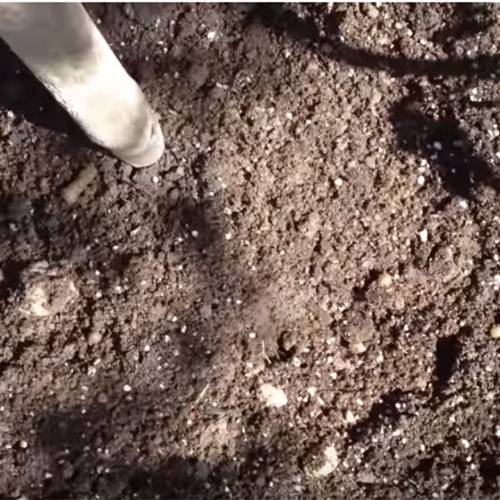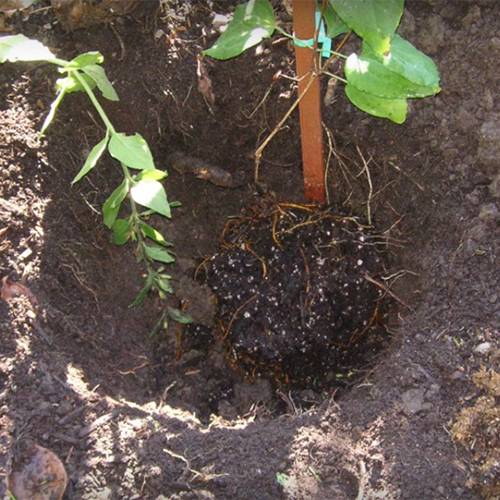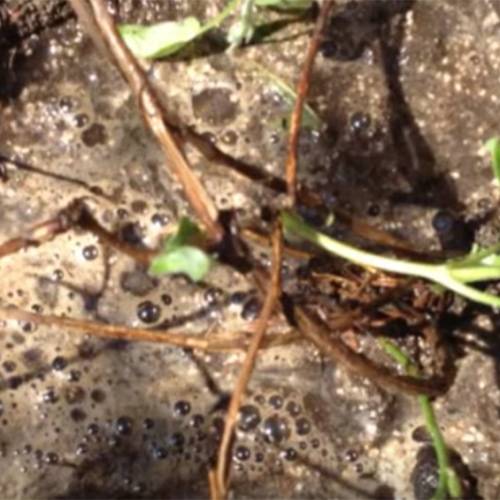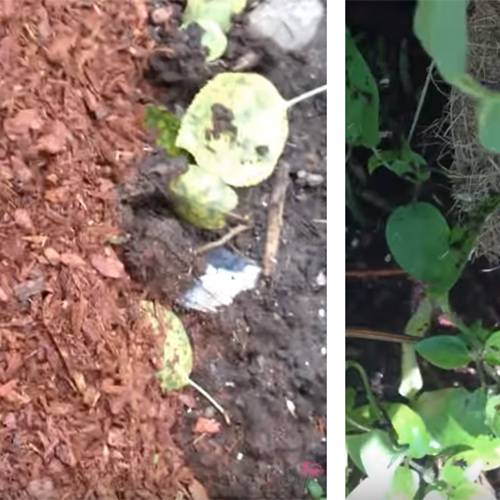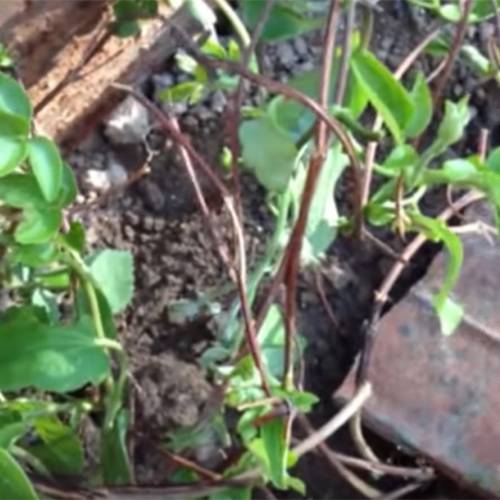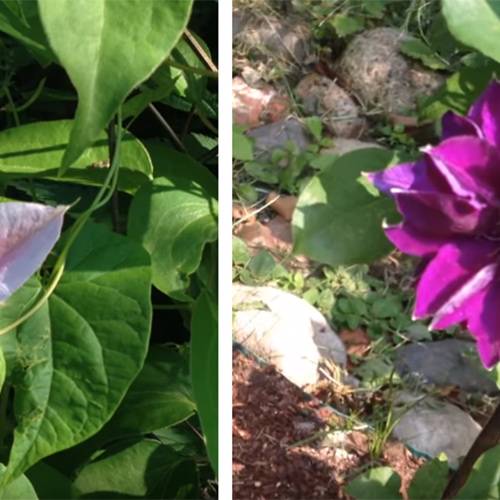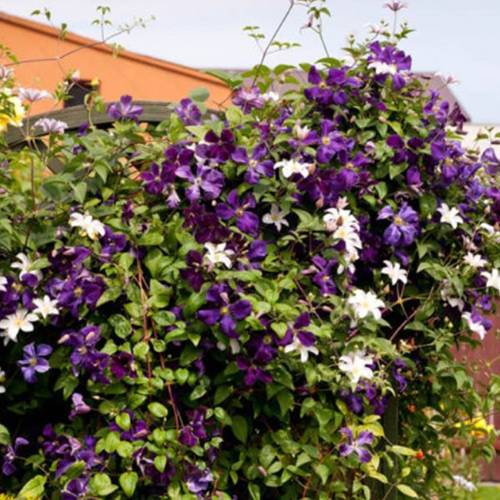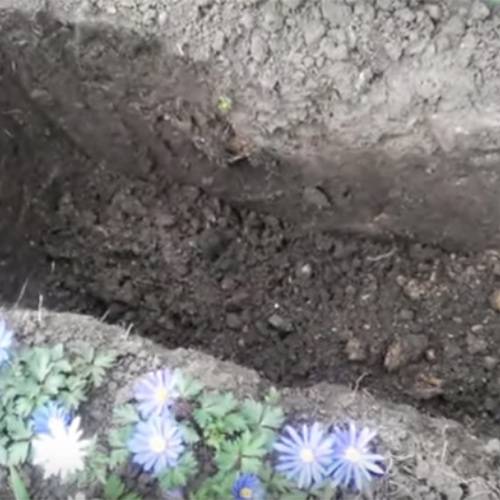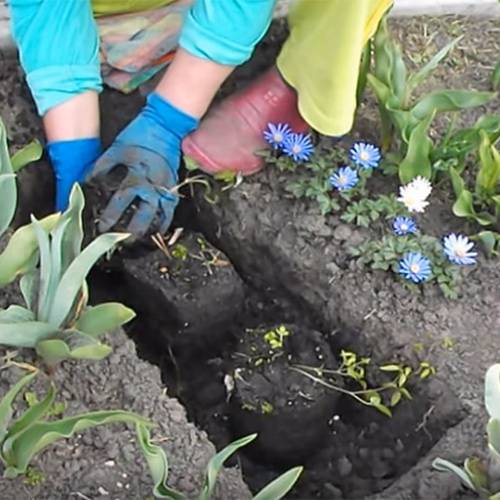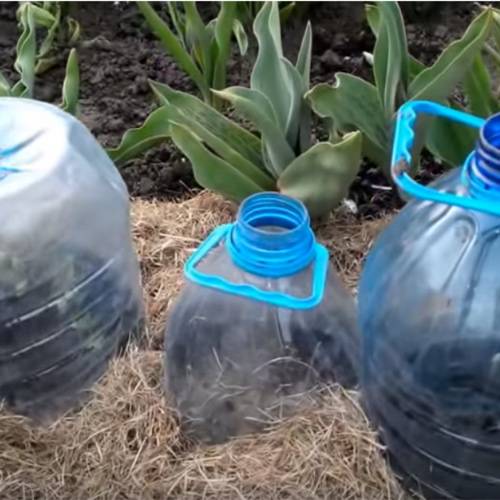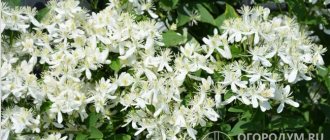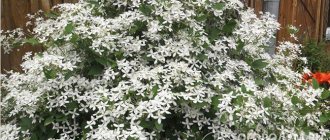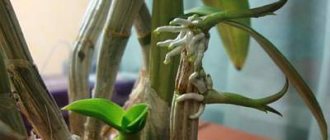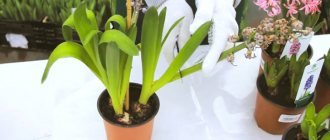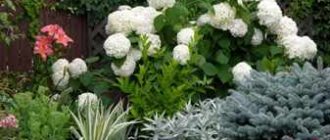Clematis in the garden are often used for backgrounds and floral arrangements. Skillfully picking up the varieties of this plant, you can get continuous flowering of the garden. Especially good are the large-flowered clematis, which are traditionally used to decorate gazebos and walls of houses, pergolas and arches. To preserve the thermophilic liana in the middle lane and in the northern regions, it needs a reliable shelter for the winter. Before this, the plant must undergo full preparation for the rest period, including pruning, feeding, preventive treatment for diseases and pests.
Basic rules of preparation
Clematis are very beautiful plants with bright flowers that decorate any garden and fit perfectly into any floral arrangement. BLarge flowers, rich colors make clematis desirable in any garden and in any area, however, behind their excellent appearance, the capricious nature of the plant itself is hidden, which does not tolerate cold weather and needs specific care for this period.
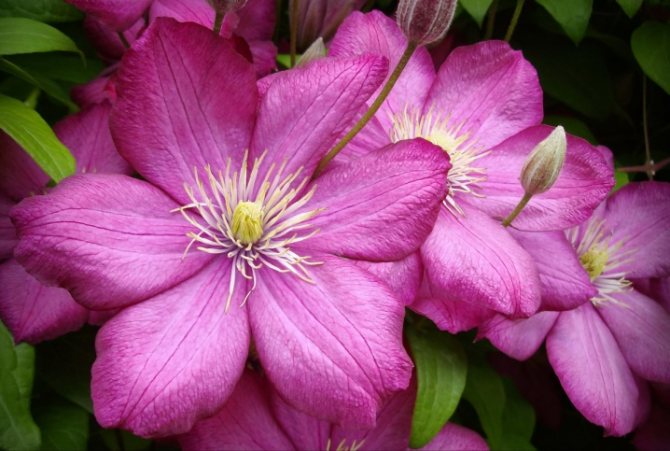
To prepare the plant for winter, you need to start working at the end of summer. Care in the fall involves activities such as:
- complete rejection of nitrogen fertilizers to stop growth;
- the obligatory application of phosphorus-potassium fertilizers to prepare clematis for winter;
- pruning the culture after lowering the temperature to +10 degrees.
Pruning is a must and is done differently for different clematis varieties.
It is only necessary to cover the plant when the cold weather is finally established. The wintering period will end only with the onset of the thaw and the first warmth. It is not recommended to immediately open the plant, it is better to periodically air it, gradually removing the layer of mulch from the bush. Clematis may die after wintering if it was not properly covered in the fall.
The weakest part of this plant is the root system, which suffers most from the incompetent human handling of it. If the soil is waterlogged in winter, then the roots are likely to rot, if conditions are not created for oxygen access, then the bush will also not survive. To avoid negative consequences, you need to ensure that moisture does not get under the clematis in the fall, and use peat, humus or compost during hiding. If none of this is present, then you can cover the bush with ordinary earth. It is important to fill in enough soil so that any frost does not reach the roots.
The height of the mound should be about 60 cm, provided that snow falls in winter and creates additional protection, otherwise you need to build a box, fill it with foliage, strengthening the existing protective layer on the eve of severe frosts.
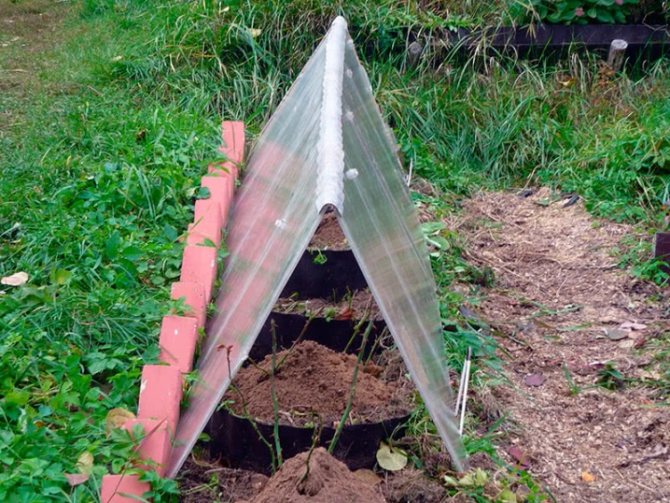

And what kind of winter will it be?
Many gardeners are interested in the question - what kind of winter awaits them and the plants. If you are careful, you can predict this. There are a small number of signs that in most cases come true:
- if there are few or no mushrooms, then the winter will be mild;
- a cold winter should be expected if the onion dries for a long time and there are many cups-clothes on it;
- a large rowan harvest (especially in the forest) also portends a harsh winter;
- if the trees have not thrown off their leaves by the end of November, then the winter will be warm;
- if the snow has fallen, and the leaves have not fallen from the cherry trees, then it will melt;
- if the cranes and geese flew away later than October 5, then winter will come late;
- watch the wind into the cover - if it is north or east, then you have to wait for a harsh winter.
Pruning features
To properly trim clematis, you need to know which of the three groups does it belong to.
- A plant that blooms only on shoots grown this year. In this case, the pruning is complete, which makes it possible to fully prepare the bush for winter. This group includes such varieties as "Zhakmana", "Vititsella", "Integrifolia".
- A crop that gives color to last year's shoots. It is not trimmed in autumn, the lashes are slightly shortened so that shoots with flower buds remain on them. This group includes vigorous representatives of alpine clematis, large-cup, golden form.
- Clematis that bloom twice a season, are not strongly cropped, but this procedure is mandatory for them. These are such varieties as Lanuginoza, Patens, Florida.
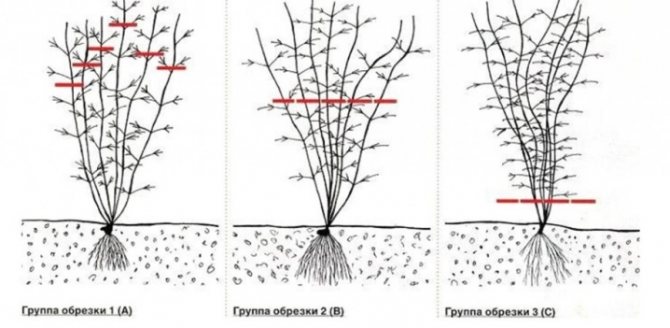

In addition to preparing for winter, every autumn it is necessary to do sanitary pruning of all bushes, removing all unnecessary, old and dead shoots. An important part of this work will be the removal of all dry leaves from the bush and from the ground, after which they are completely destroyed. It is important to carefully examine the bushes in order to identify diseases of the culture in time. You need to trim clematis correctly, taking into account the characteristics of the variety, because some specimens need to cut off almost all shoots, while others should have 1-2 buds, from which growth and flowering will take place next year. If the variety is unknown and the bush grows only for the first year, then it is best not to cut off the shoots and cover the plant completely, but in the spring to examine it and find out what has survived and what has dried up.
For mature plants, formative, sanitary, and winter pruning must be carried out continuously to maintain a healthy crop. For young clematis preparing for their first winter, it is recommended to remove all shoots, leaving 30 cm long stumps.
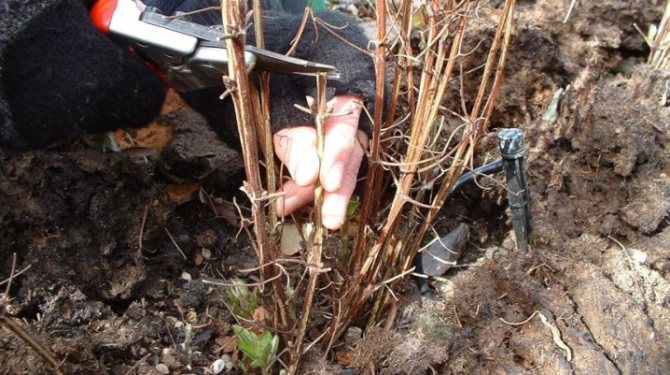

After the bush has overwintered, it begins to enter the active growth phase. During this period, it is important to carry out formative pruning on time and correctly, removing all poorly developed and affected shoots. By removing all that is superfluous, you can give the bush the opportunity to focus on active growth, as a result of which clematis drives out new lashes, on which flowers appear over time. It is also important to remember about the annual sanitary pruning, which prevents the development of diseases.
If you don't have experience in caring for clematis yet, then you can carry out universal pruning, which involves dividing the shoots into three parts:
- the first part is shortened so that the height of the branches does not exceed 30 cm;
- the second part has a shoot length of up to 1 m;
- the third part is left intact, only the tips are shortened slightly.
With the help of such pruning, it is possible after a year to track the plant's reaction to each of the exposure options. The part that grew best and bloomed earlier than all, will become a model for future measures to prepare the shrub for winter.
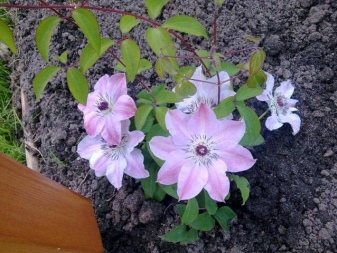

Home pruning
Pruning is carried out on the same day with shelter... It is necessary to carry out such work taking into account the type. These vines are conventionally divided into three pruning groups, each of which is endowed with individual characteristics, and their preparation for winter differs significantly.
| Trimming group | Work rules | Varieties and species belonging to the group |
| Group 1 - it includes clematis that bloom on last year's shoots. | In this case, minimal pruning is carried out, during which all diseased, damaged and underdeveloped shoots are removed. Also, the plant is shortened, leaving a height equal to 1-1.5 meters. | · Floralia; · Carmen Rose; · Joan of Arc. |
| Group 2 - typical flowering twice a year. The first occurs on old shoots, and the second on new ones. | In the course of such work, old, diseased and broken shoots are also removed, but shortened to a height equal to 1.2 - 1.5 meters. In addition, once every 5 years, it is necessary to carry out a renewal pruning, during which almost all old shoots are selected and cut out. | Anna German; · Cassiopeia; · Barbara Jackman; · Ivan Olsson; · Lord Neville; · The president. |
| Group 3 - such clematis bloom only on the shoots of the current year that appeared after winter. | Such bushes do not need last year's shoots, so pruning is carried out almost at the root, leaving a small stump 20-50 centimeters high, on which several pairs of buds must be present. | · Cuba; · Romance; · Roco-Call; · Cloud; · Melody; · Mercury; · Mephistopheles. |
Also, many gardeners practice universal pruning that suits all types of clematis. In the course of such work, the shoots are cut one by one, that is, one is left 1.5 meters long, and the other is shortened to 2-4 buds. In addition to the convenience and the possibility of applying to different plants, this method helps to gradually rejuvenate the vine.
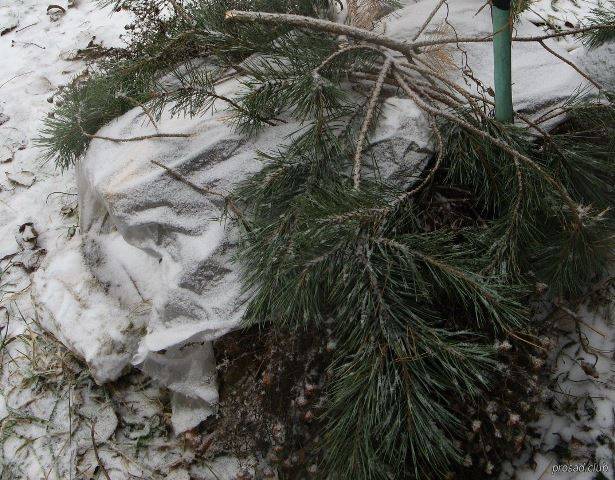

Shelter for clematis for the winter
How to cover clematis?
To preserve clematis bushes in winter, they must be covered for the winter. An important component of preparation for wintering will be the creation of absolutely dry conditions for it. Although the bush is sensitive to cold, it suffers much more from waterlogging. In order not to have problems in the future, it is better to cover the bushes only in sunny and dry weather, when the ground is completely dry.
Shelter should not be carried out at certain times, but depending on weather conditions. As soon as the soil begins to freeze and the temperature of -5 degrees is stable outside, this is the most opportune moment for work. The plant overwinters well if the preparatory measures were performed correctly, and even frosts down to -45 degrees will not have serious negative effects on clematis.
When to cover, at what temperature
While the foliage of clematis is green, it is impractical to cover the plant. Nutrients are redistributed to the roots, the vine has not yet gone into a dormant state. As soon as the first frost hits, the leaves will dry out. Now the opportune moment has come to create a shelter. It is necessary to engage in this event when stable subzero temperatures occur, in dry weather. It is believed that clematis easily tolerates frost down to -5-7 degrees. The timing of covering activities depends on the specific region.
In the suburbs, the middle lane
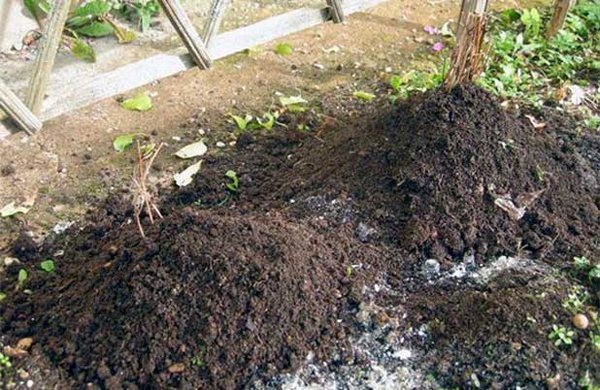

Suitable weather, in order to shelter clematis, comes in the suburbs and other regions of the middle zone in early November. By this time, the temperature drops to -5-6 degrees, freezing of the upper layers of the soil begins. At this moment, the creepers are finally warmed for wintering.
Previously, after the first October frosts, the plants are spud up to a height of 10-15 cm in order to protect the roots from freezing. With such light cover, clematis can easily wait for solid protection from the cold in November.
In the Urals
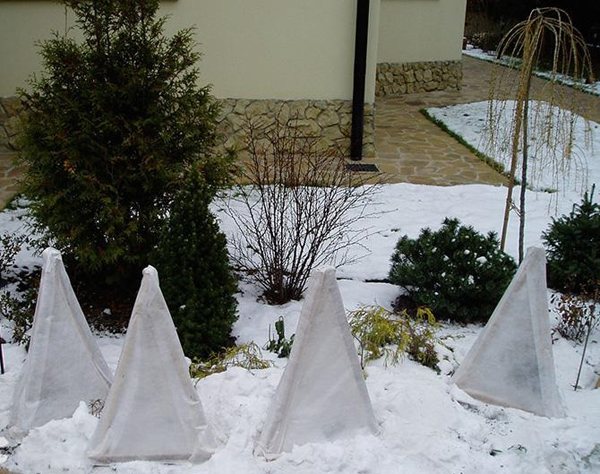

In the Urals, weather conditions change frequently and dramatically. It is rather difficult to predict the onset of persistent frosts here. Roughly, clematis should be sheltered in this climatic zone 2 weeks earlier than in central Russia, that is, in mid-October.
You should not do this if it is raining outside and the temperature has not yet reached minus. As soon as the average daily temperature is -5 degrees, you can start building a shelter. The best for this area will be the frame option, which provides dry wintering and the presence of an air gap.
In Siberia
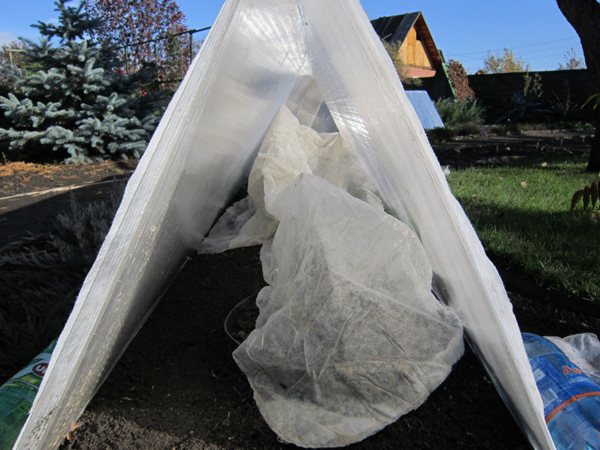

In Siberia, freezing temperatures can come in the first decade of October. At this moment, it will be necessary to cover the clematis. Only early varieties are suitable for cultivation in this climatic zone. Shoots of late clematis simply do not have time to ripen before the onset of cold weather and will suffer during wintering. It would seem that the harsh climate requires more solid shelter. In fact, the flowers winter well under the snow, of which there is a lot in Siberia in winter. Here, as well as in the Urals, the best will be a frame shelter with a solid roof that can withstand the weight of the snow mass.
Advice! If after a frosty winter the bush did not come to its senses, and you got the impression that it died, do not rush to dig up and throw away the clematis. It is not uncommon for a plant to release new shoots from dormant vegetative buds, 2-3 years after a difficult wintering.
In the Leningrad region
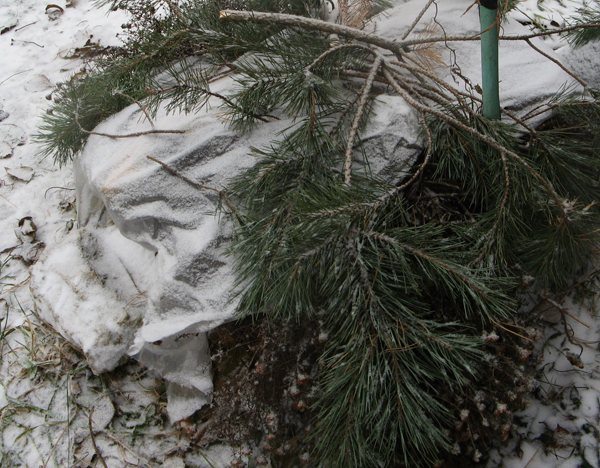

The climate of the Leningrad Region is unpredictable due to the constant change of atmospheric fronts. In general, the weather here can be described as cooler and rainy than in central Russia. In winter, there can be severe frosts followed by thaws.
In such conditions, it is very important to provide clematis with a dry winter. The base of the bush is covered with dry sand or earth, creating a mound. The lashes removed from the support must be laid on the base, which can be spruce branches, boards or pieces of foam. On top of the lash, wooden shields are laid with supports along the edges so that the clematis shoots are located freely.
The last is the insulating layer of roofing felt, non-woven material or film with ventilation holes made. If there is a need for vertical shelter, pegs are driven in around the bush, which are covered with roofing material or several layers of non-woven material.
On a note! Given the climate of the Leningrad Region in winter, it is necessary to periodically open the shelter for ventilation.
Wintering of different varieties
There is a wide variety of clematis varieties, which differ in the height of the bush, the size and shade of the flowers, and the flowering time. Before planting this plant on the site, it is worth choosing the right variety so that it feels comfortable in a certain area. In addition to the main parameters, it is worth paying attention to the plant's resistance to frost. At the moment, these are the most winter-hardy varieties.
- "Abundance" - a variety originally from France, has red or pink flowers. Grows from 2 to 4 meters in height. The winter hardiness of this plant ranges from 28-34 degrees below zero.
- "Avangard" - a variety obtained by chance, but entrenched due to abundant flowering and unusual flowers of red-pink color.
- "Azur Ball" - a new variety with double flowers of a light blue hue. Grows up to 2 meters. The maximum allowable temperature for comfortable wintering should not fall below -30 degrees.
- "Ai-Nor" - the variety was bred in the 70s, unpretentious, blooms well, grows up to 2.5 meters in height, the flowers are large, pale pink. A comfortable wintering temperature for him will be from -1 to -20 degrees.
- "Alana" - a variety bred in New Zealand, the color has the reddest shade of the existing ones. It blooms beautifully, but not too profusely.
- "Albina Captivity" - a variety with white flowers with an unusual oblong petal shape. This plant is able to withstand temperatures down to -40 degrees.
- "Alyonushka" - this is the most popular variety, unpretentious, well-blooming, frost-resistant. For full growth and development, he needs a support to which the bush is tied. The flowers are pink-purple.
The winter hardiness of each variety can vary depending on the characteristics of the plant, therefore they can be planted in different territories, but always taking into account the temperature indicators of the area in winter.
If we talk in general about the frost resistance of clematis, then it is imperative to take into account the following nuances.
- Plants that bloom on the shoots of this year are most susceptible to the negative effects of frost. If the bush is not cut, then frosty weather will damage a certain part of the shoots, which will be forced to be cut off by gardeners in the spring.
- Clematis blooming on last year's shoots are more frost-resistant. If old shoots freeze, then young vines will bloom in spring, albeit with a slight delay.
- Varieties that winter well, do not need to preserve last year's shoots and simple hilling is enough.
- Adult plants, which are held on supports, may not be removed from them at all, but laid on the ground and covered with a film. The peculiarity of this method is that the leaves are not removed, but remain on the bush. In the absence of diseases, this does not harm, but in the presence of some kind of disease, the bush will die.
The popularity of clematis does not fade, and therefore you can find tall representatives of this plant on arches and partitions, as well as in the company with tall shrubs that bloom in the open field in spring. Low-growing plants are very popular for use in mixborders in company with roses.
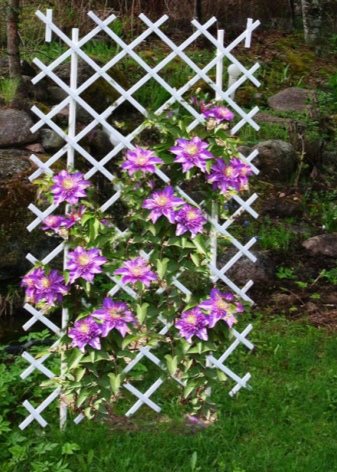

See below for preparing clematis for winter.
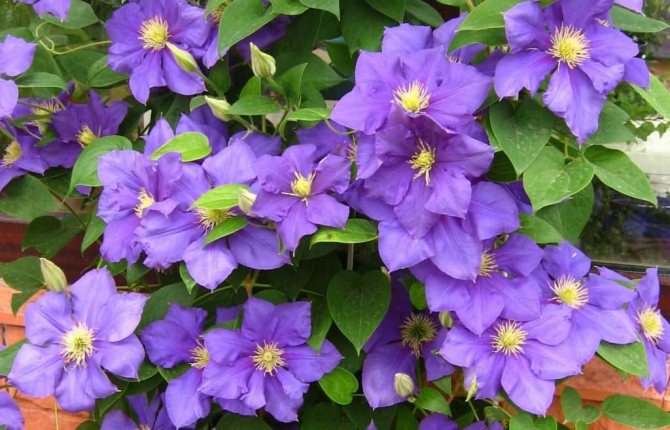

Clematis is very fond of light and nutritious soil. This amazing plant impresses with abundant flowering and rapid growth only with proper care. Preparation of clematis for winter is also very important, since there are plant varieties that are very afraid of cold weather. Some of them die even at a temperature of -5 degrees.
Preparatory work for the winter period includes:
- Carrying out sanitary pruning.
- Shelter of the root system.
When studying the issue, it is worth paying attention to the variety of flowering liana, since varieties can overwinter in different ways.
Will it freeze, won't it freeze?
Having secured the information given above, we can conclude that it is possible to grow clematis in any climatic region, subject to several agrotechnical methods for sheltering clematis for the winter.
Preparation of clematis for shelter for the winter must begin in the fall, when new shoots begin to ripen in the plant:
- Top dressing with phosphorus-potassium fertilizers;
- Removal of diseased shoots and old leaves;
- Before the first frost, it is necessary to treat clematis with 1% Bordeaux liquid or Fundazol.
In varieties that form flowering on last year's shoots, it is necessary to maintain summer growth, and in order to avoid fungal diseases, remove only diseased shoots and old dying leaves.
In preparation for the winter shelter of clematis of the first and second pruning groups, even before the temperature drops to -5 ° C, the base of the bush is earthed to a height of about 15 cm with a mixture of sand and ash.
After that, the shoots are removed from the support and carefully bent down, under them and on top of them spruce "paws" are laid. If there is a threat of winter thaws, then spruce branches are sprinkled on top with dry peat or sawdust. You can also cover the constructed shelter of clematis clematis for the winter with plastic wrap, and inside the shelter along the rolled shoots, arrange wooden slats.
Clematis blooming on the shoots of the current year belongs to the third pruning group: with the onset of stable frosts, they are sprinkled with a layer of sand up to 15 cm thick and at the same height the shoots are cut off, after which 20-25 cm of peat, rotted manure or sawdust are placed on the shelter. From above, the structure is covered with a film.
If you approach the shelter of clematis for the winter with all responsibility, then they can easily withstand frosts down to -40 ° C. But often mice take shelters for wintering, which spoil the plants, therefore they leave poisoned baits under the bushes.
However, even at the planting stage, the risk of clematis freezing can be minimized. When planting in the soil, the plant must be buried in such a way that the tillering node:
- In a young plant, it was 8-10 cm below the edges of the planting pit;
- In an adult - by 10-12 cm.
If the group to which a particular plant variety belongs is unknown, then before clematis is sheltered for the winter, its shoots can be cut to a height of 40-60 cm.
Pruning clematis for the winter
Many beginners are interested in whether it is necessary to prune clematis for the winter and when, because not only the abundance of flowering depends on this process, but also the growth and resistance to pests and diseases.
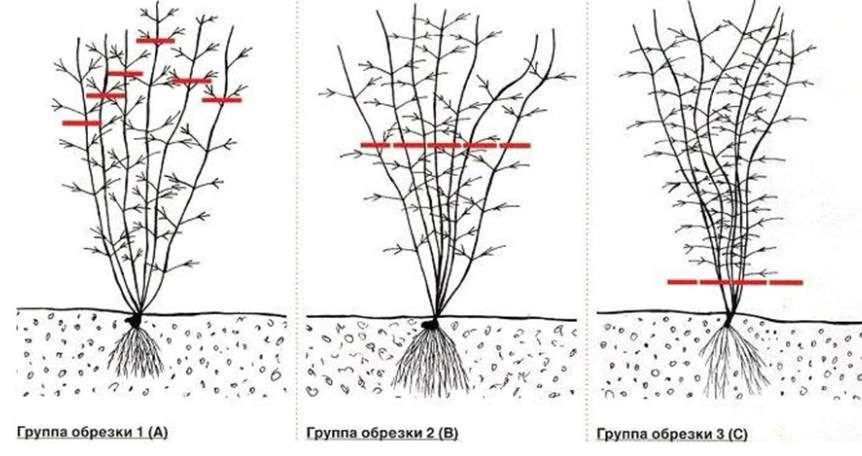

Depending on the climatic characteristics of the region, pruning is carried out in October or November. Frost-resistant clematis are pruned for a long time, and therefore it is better to choose dry and calm weather.
How to prune clematis for the winter, depending on the age and group of the plant:
- In the first year of growth, only 2-3 live buds are left on the shoot. As a rule, the vine is cut at a height of 25 cm. Such a cardinal procedure will help the vine grow into a lush bush.
- Flowering vines of the first group (blooming on last year's branches) are cut off quite a bit. Gardeners recommend leaving shoots up to 2 meters away by cutting off their tips. You should also carry out sanitary procedures by cutting off damaged elements.
- Lianas of the second group (plants that delight with flowering 2 times during the growing season) are cut at a height of up to 1.2 m. The bush should also be sanitized.
- The third group (buds are formed only on young spring branches) of clematis for the winter period is cut off dramatically, only 2-3 buds are left.
Important! If there is no data on which group the clematis belongs to, and it is difficult to determine this on your own, they use a universal technique: the height of the shoots alternates - the first shoot is 1.2 m high, the second - for 2-3 buds, and so on.


Refusal to trim adult bushes will lead to the fact that the plant will lose its decorative effect and stop developing and blooming. That is why pruning is a mandatory procedure for flowering creepers that hibernate outdoors.
General information
Clematis belongs to the group of thermophilic vines, which are very important to protect from freezing in cold weather every year in autumn. In order to properly perform the shelter and maintain the health of the plant, you need to carry out several activities for the care of garden clematis in the autumn period.
- The first step is to water properly. In accordance with what kind of soil is used when planting and growing a plant, you need to perform a fairly abundant watering.
- The next part of the activities is aimed at preventing fungal diseases. When the plant is preparing for wintering, you need to carefully cultivate the soil near the clematis bushes using preparations that contain copper. It is very important to use a weak pink solution of potassium permanganate every year when planting and before sheltering. Good results are shown by treatment with 0.2% baseol, 1% vitriol. The same procedure should be carried out after removing the shelter in the spring, which will stimulate the active growth of plants.
- Depending on which group the clematis belongs to, it may be necessary complete pruning or neat shortening of the shoots of the plant from above by five buds.
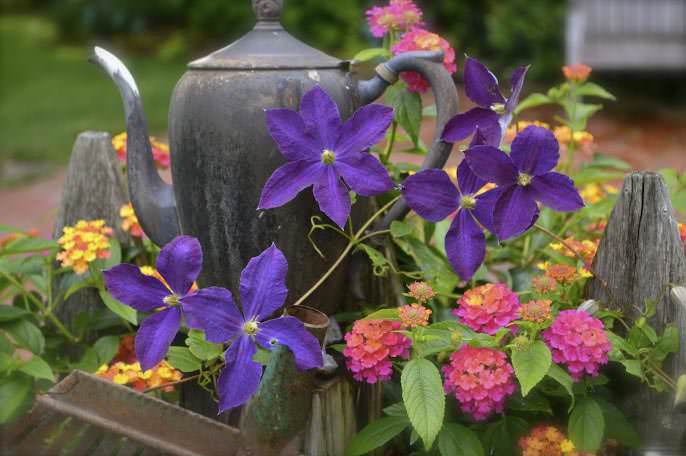

Experienced flower growers begin to hold annual events to prepare garden clematis for winter at the end of August, which allows you to do everything efficiently and without haste. You can cover the plants already in October.
Removing clematis from the support
Removing clematis from a support that has been developing on it for many years is not an easy task. To facilitate work, professionals recommend tying the vine on one side to the trellis. It is simply impractical to braid branches between the twigs, since it will be impossible to remove them in the autumn without mechanical damage.
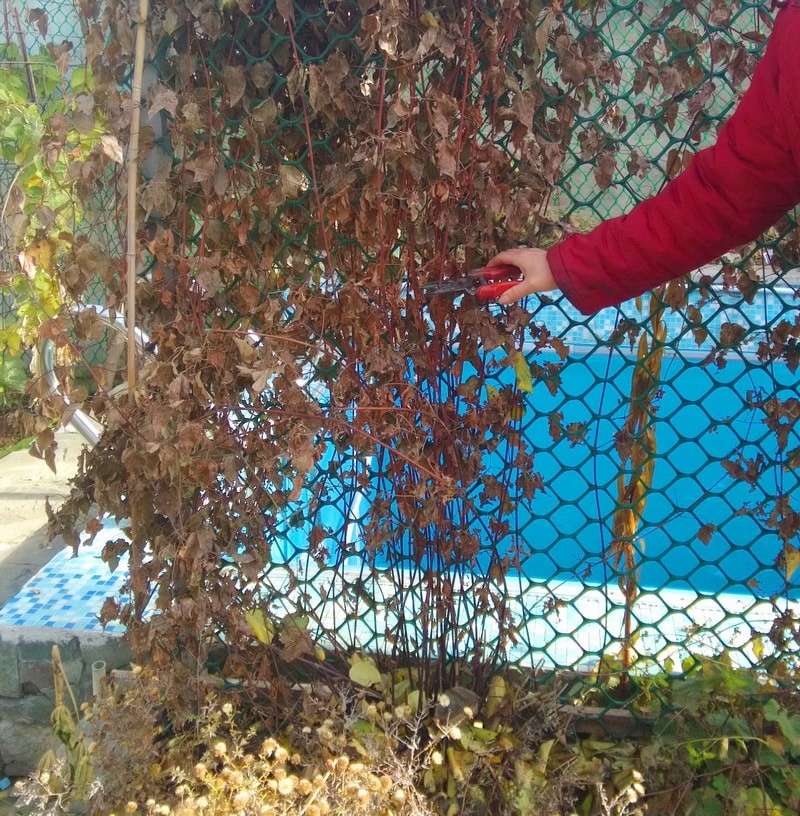

If you imagine an adult full-fledged bush that braided the support, then you can grab your head. But in fact, there is nothing complicated in such a procedure.
Technology for removing the vine from the support:
- Cut off all branches and main shoots of the plant at a height of one and a half meters.
- Remove all fastening materials (wires, ropes) with which the shoots were fixed on the support.
- With the help of scissors, cut off all the leaves and young branches that are still caught on the support and hold the plant on it.
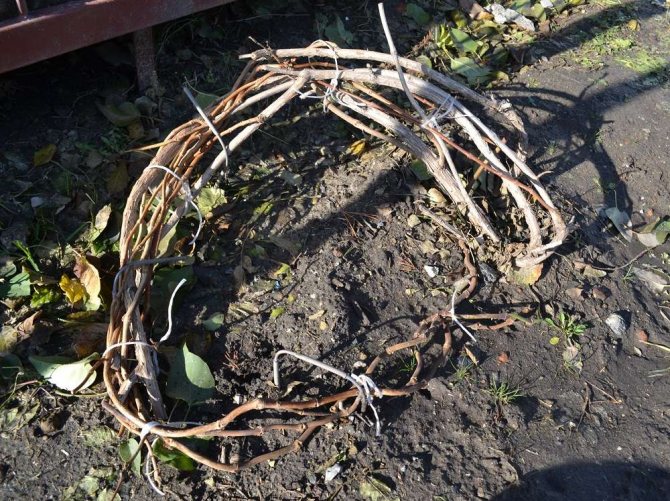

The fully "disassembled mechanism" allows the clematis to detach from its support. Such work does not take more than 20 minutes and a lot of effort. Naturally, such a bush will need sanitary pruning and removal of dry and damaged branches.
Selection of clematis seedlings for planting in the Urals
The further flowering of the plant, as well as its duration, depends on the planting material.
When purchasing seedlings, you need to consider the following points:
- Healthy planting material has no mechanical damage.
- A developed root system consists of five or more roots.
- An autumn seedling should have several shoots with buds.
- The best time to buy a seedling is mid-September.
- When choosing a seedling, it is better to choose a plant with a closed root system.
How to cover clematis for the winter
How to cover clematis for the winter is the next question that interests beginners. After all, it is these works that are the next step in preparing the plant for the winter period.
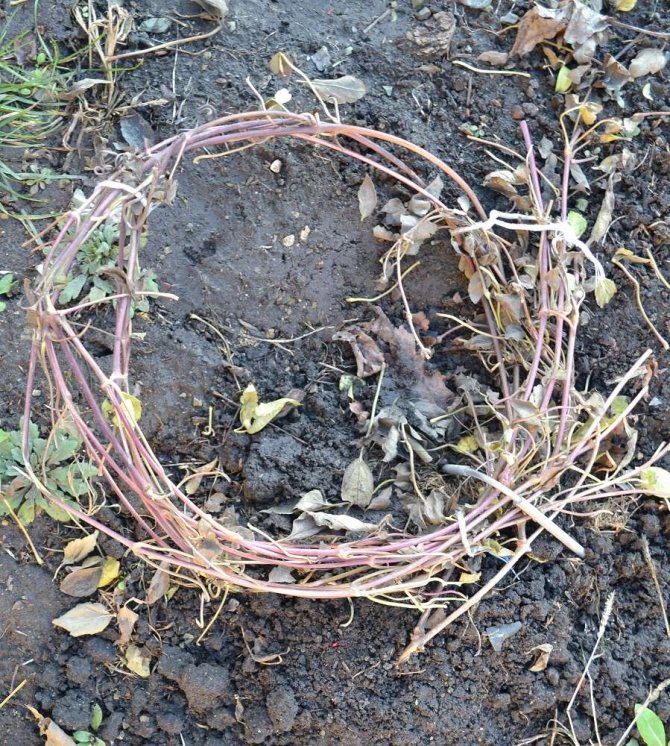

Plant shelter secrets:
- The protective mechanism must protect the plant from cold, wind and water from melted snow.
- It is recommended to pour 2 buckets of garden soil or humus onto the root system near the trunk. This will prevent the roots from getting wet.
- Long shoots are placed on a special material that will protect them from frost. Professionals use wooden planks or cut branches of the same clematis. Coniferous hairpins can also be used, but they are removed in early spring. It is convenient and simple to use a special lutrasil material for laying shoots for the winter: the shoots are wrapped in material and laid on the needles, sprinkled with dry leaves and covered with slate.
Advice! When sheltering, ventilation shafts should be left on both sides. It is also worth considering protecting the film from the sun if this particular material is used.
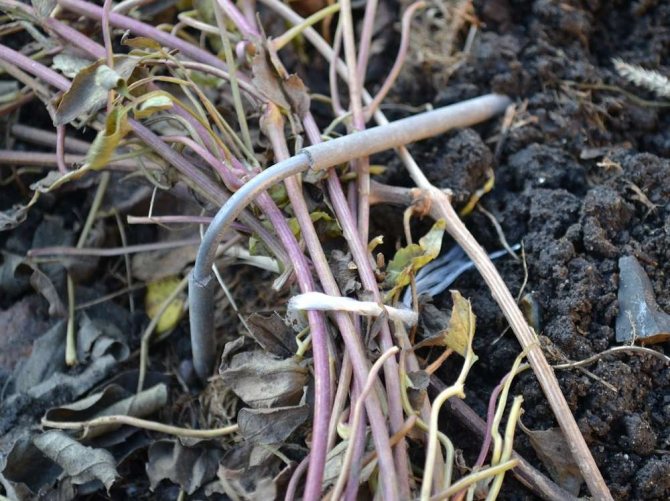

Clematis, whose wintering in the open field is done correctly, will delight you with abundant flowering. Professionals recommend making special wooden boxes that will allow you to adjust the temperature (open / close the lid).
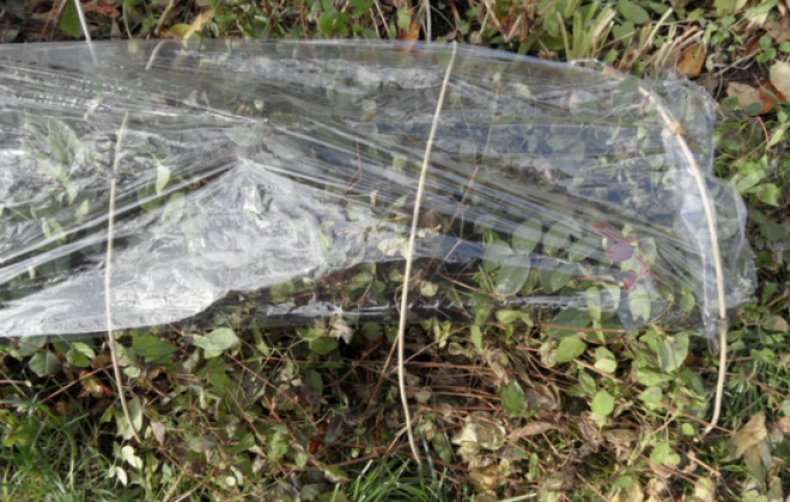

It is very important to organize preparatory work, since mistakes in the fall are the reason why clematis rises late after winter and does not bloom.
Variety of clematis
To determine the front of work when sheltering clematis for the winter, it is necessary to have an idea of the types and groups of this plant. Also, knowledge of the species diversity of clematis allows you to avoid troubles in the form of a plant that has not tied the buds.
By the nature of flowering, clematis is divided into flowering shoots:
- Current year;
- Previous years;
- Last year and the growth of the current year.
By flowering time, clematis are divided into:
- Early flowering;
- Medium flowering;
- Late flowering.
The climate in which clematis grows is one of the determining factors for choosing a particular variety and for determining the degree of shelter for clematis for the winter. In the northern regions, preference should be given to mid-early varieties that bloom with the growth of the current year (for example, Cardinal Rouge, Andre Leroy and others from the Jacquemann and Viticella group).
Clematis of the third type of flowering, which delight gardeners with flowers in spring on last year's shoots, and at the very end of summer on new ones, are suitable for temperate climates (for example, Jeanne d'Arc and Ballerina from the Florida and Patens groups). A huge advantage of this group of plants is that clematis will bloom on the shoots of the current year even with light shelter for the winter!
Demanding clematis of the Vititsella and Lanuginoza groups are perfect for planting in a southern climate. For example, the varieties Blue Flame, Lord Neville - when predicting a cold winter, even in warm climates, they need reliable insulation with careful preservation of the shoots of the past year.
Despite the apparent complexity of agricultural technology, clematis is considered a fairly frost-resistant plant, since some of its species are able to withstand temperatures as low as -12 ° C.
Clematis care in winter
In winter, a gardener who has covered a flowering liana in accordance with the rules of agricultural technology does not have to work hard. However, if there is little snow and at the same time severe frosts persist, it is necessary to throw a snow cushion over the covered bush.
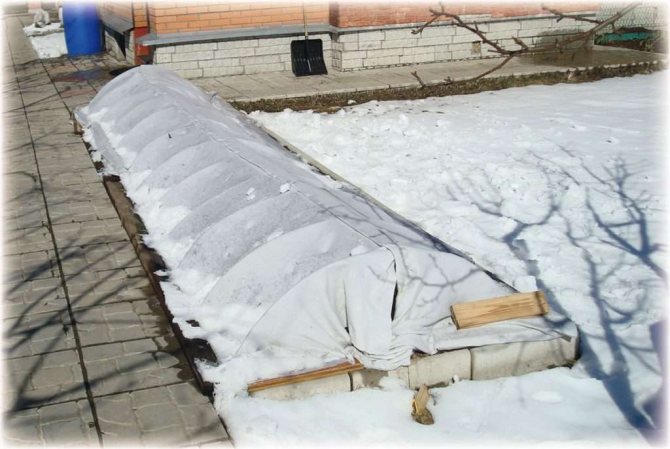

With constant thaws, professionals advise you to check the shelter for the presence of high humidity and, if possible, ventilate the protective structure.
It's also worth remembering that a hiding place is the best home for rodents. Mice are dangerous pests, as they love to feast on juicy creeper shoots. To minimize the risk of colony formation, special preparations and needles are laid out.
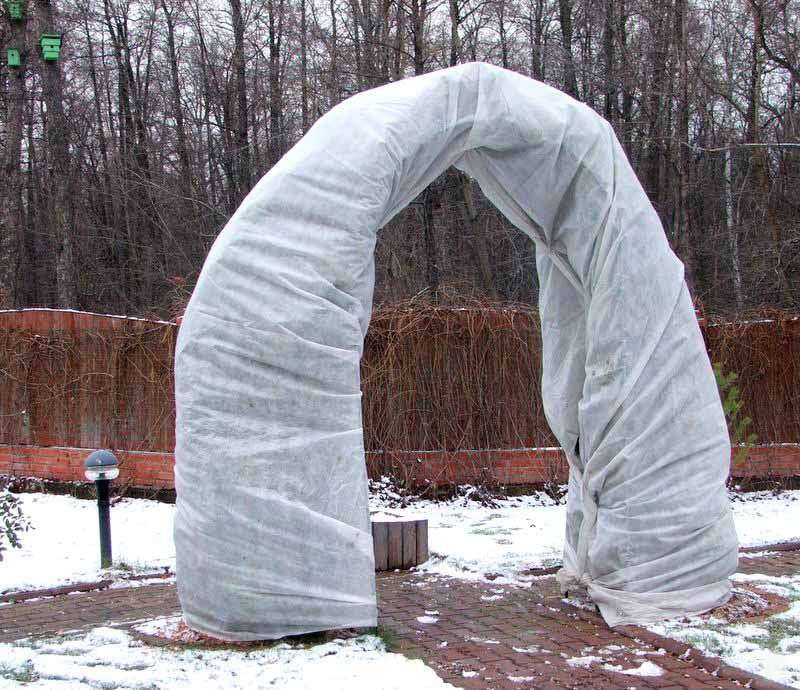

Before studying how clematis winter, it is recommended to learn everything about the characteristics of the variety. Hybrid plants can be grown in containers and hibernate indoors only. There are also varieties that do not need shelter at all for the winter.
Taking care of clematis is not difficult at all. Even a beginner can handle autumn work. Clematis will thank you for the care and attention with abundant flowering.
Clematis are very beautifully flowering vines that have long been grown by flower growers on their backyards. But novice gardeners who planted these beautiful plants in their garden to decorate the area around the gazebos or a fence often do not know how to properly care for various types (groups) of clematis in the autumn, as well as how to prepare them for the coming cold weather - after all, from such procedures directly depends on how the shrub will build up its vegetative mass and bloom in the next season. All this and much more will be discussed below.
Common mistakes of florists
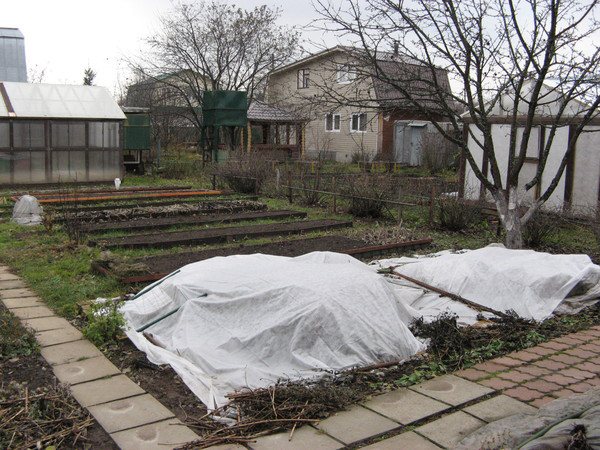

The cultivation of spectacular vines sometimes causes controversy among gardeners about agricultural techniques. Nevertheless, there are a number of actions that, without a doubt, are considered wrong by all experienced summer residents and specialists:
- Some people forget to do hilling, but this procedure is very important. Even if clematis was wonderfully sheltered and did not suffer from frost in winter, in spring it may die due to stagnation of melt water near the roots. This can be prevented by adding a bucket of humus or compost under each bush in the fall. You can remove the mulch from the bush after the snow has completely melted.
- In addition to diseases and harmful insects, clematis can be threatened by mice in winter. Having built a frame for insulation, the gardener gives the rodents an excellent opportunity to build nests inside the shelter, nibbling clematis branches for this, in the spring he can expect a sad picture. Since such a possibility cannot be excluded, it is imperative to put a poisoned bait inside the frame structures, then your clematis will definitely remain unharmed.
- Sometimes, wanting to quickly make sure that clematis has endured the winter well, the owner of the site impatiently and not too carefully rakes the soil at the base of the bush.As a result, fragile young shoots growing from the ground are damaged, and the plant stops growing, later launching a reserve bud. Rake the soil from the shrubbery very slowly and carefully.
- Often the reason for the weak growth of clematis is an improper planting. If during the first 3-4 years new shoots hardly grow, it means that the plant was not buried in the way recommended by specialists. The situation can be corrected by pouring a layer of earth 8-10 cm high into the base of the bush. But it is better, nevertheless, to transplant the plant according to all the rules.
It is the wrong wintering that most often causes the death of clematis. Although this plant is very resilient and can revive even years later, it should not be tested for its endurance. Do the necessary preparation in the fall and properly cover your clematis so that it can delight you with its flowering. Do not forget also about spring care, which includes timely watering and feeding, then the luxurious liana will present you with only pleasant surprises.
How to care for clematis in the fall: measures to prepare for winter
Autumn work on the care of clematis depends on what species these vines belong to.
The main types of autumn work for the care of clematis:
- making autumn dressings;
- pruning vines;
- treatment for fungal diseases;
- shelter before the onset of cold weather.
Video: pruning clematis in the fall and shelter for the winter
The specifics of caring for clematis in the fall and preparing for winter in the first year
In the first year after planting clematis seedlings, they do not need special care in the fall. But it is necessary to cut these plants in the fall. Any of the species of these flowering vines is cut off the same way for the first time - all shoots should be cut to a height of 20-30 cm, while no more than 2-3 buds should remain on each of them. This pruning is necessary so that lateral shoots begin to grow actively next year.
If the weather is dry, then, of course, you should not forget about watering, but, as a rule, autumn still pampers with frequent and heavy rainfall.
Also, for preventive purposes, it is recommended process cut off shoots and the ground around them with fungicides (for example, "Fundazol") against fungal diseases.
Then, before the start of frost, a phased shelter of young clematis should be carried out for the winter. Regardless of the varieties and varieties of the plant, all the seedlings planted in this season are subject to shelter for the winter - they are still too young, so they do not have frost resistance. The first stage is hilling the cut seedlings with dry soil, to which you can add peat or humus. The next stage is to cover with insulating materials. To do this, you can use spruce branches, peat, sawdust or any other material that allows air to pass inside for ventilation. Otherwise, the plant may simply oppose.
How to buy Clematis seedlings in our nursery
You can buy one Clematis plant from 300 rubles. We send plants and flowers to nonresident customers by mail.
A short description, as well as other photos of Clematis taken in our nursery during different periods of growth of this plant, you can see by following this link: Clematis: description and care. See also: How to buy clematis seedlings by mail.
Video with information about which clematis seedlings you can buy by mail in our nursery.
Description and recommendations for growing other plants:
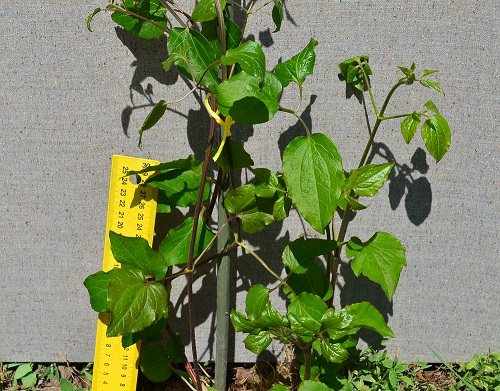

How to buy clematis seedlings by mail
In our nursery you can buy clematis seedlings of the 2nd pruning group. We send clematis by mail with an earthen clod (ZKS).
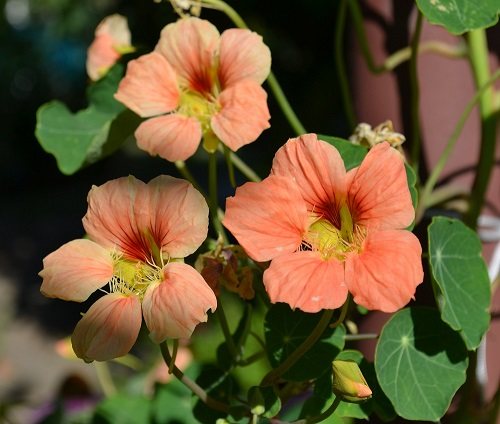

Nasturtium - description, cultivation features
Nasturtium flower - description and recommendations for growing and care. Reproduction methods of perennial plant nasturtium.
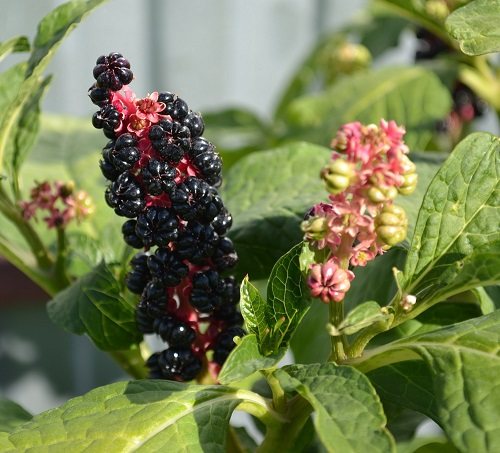

American Lakonos - description and landing
The exotic perennial Lakonos has its own characteristics, which you must know if you decide to grow this flower in your garden.
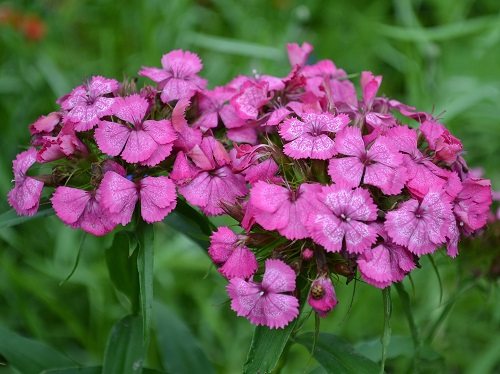

Turkish carnation - description
Turkish carnation is an unpretentious perennial plant, but it also has its own characteristics for growing and care. You will find a detailed description of this plant, tips for growing and care in this article.
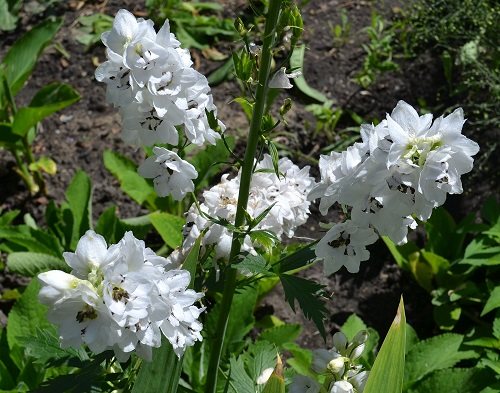

Delphinium - description and cultivation
Recommendations and advice on growing delphinium, proper care for it and methods of reproduction.
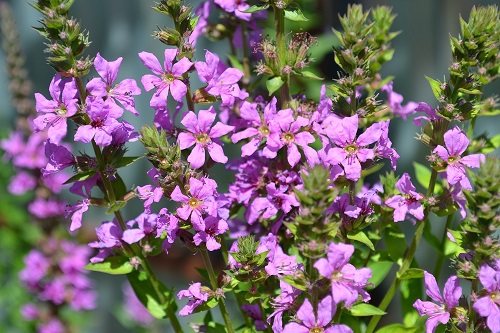

Willow loosestrife - description
Willow loosestrife - a detailed description of this shrub with recommendations for planting, cultivation and care.
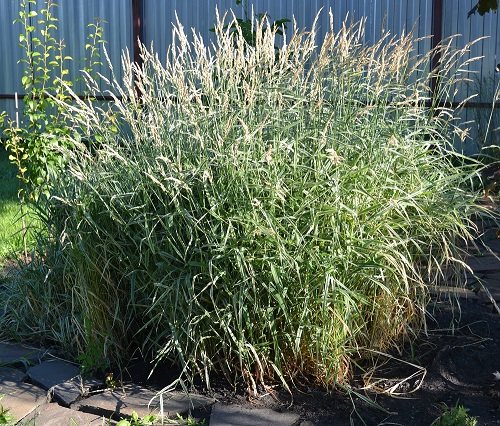

Two-source reed (falaris) - description
A detailed description of the perennial herbaceous plant falaris or two-source reed (sedge). Recommendations for planting, cultivation and care.
Pruning clematis in the fall
The autumn pruning of clematis should be carried out correctly, taking into account the peculiarities of the flowering of various varieties of this flowering perennial, so that in the next season clematis will delight your eye with its active flowering.
When to prune a plant in the fall? As a rule, it is optimal to carry out pruning shortly before the onset of cold weather.
The clematis pruning procedure includes the following varieties:
- sanitary, which removes all damaged or dried branches, as well as all dried flowers;
- thinning, in which branches that are excessively thickening the bush are cut out.
- formative, in which clematis is given a certain shape, which improves their growth and flowering;
- winter (for shelter), in which these plants tolerate the cold period better, freeze less.
In our case, the conversation will focus on the last of the types of pruning, although in part it combines in itself all the other types of pruning. It is clear that by cutting off these flowering vines before the onset of frost, it will be easier to cover them for the winter. Therefore, it is quite clear why clematis should be pruned in the fall as a preparation for winter. In addition, such pruning rejuvenates the flower, and in the next season they will have new shoots with blooming buds (not in all species).
Important! Detailed information on pruning clematis you can get by reading this detailed article.
When is it better to prune clematis - in autumn or spring
Winter pruning, as the name implies, is carried out in late autumn, before the onset of frost. But the formative and sanitary types of pruning can be carried out both in spring and early autumn. But carrying out all types of pruning should be carried out, taking into account the biological characteristics of the varieties of these climbing vines.
How to properly trim clematis, depending on the type
Based on the peculiarities of the formation of flower buds on the shoots of these vines and the subsequent flowering, clematis is divided into three main groups.
The first of them (by trimming) vines enter, the buds of which appear on the shoots of the last season. Most often, such varieties of clematis of this group are grown in garden plots: Hegley Hybrid, Biryuzinka, Cardinal Rouge, Armanda, Montana, Wesselton, Frankie and others.
Clematis from the following (second) group from May to the second decade of July, the buds bloom on the shoots of the last season, and from the second half of July, flowers appear on the lateral stems that have grown in this season. The most popular varieties are Dawn, President, Fair Rosamund, Flower Ball, Ministerial and some others.
To the third group varieties include the buds on which appear only on the shoots of the current season. The most popular types of clematis of this group are Ville de Lyon, Cosmic Melody, Victory Salute, Cloud, Gypsy Queen and other varieties of the Integrifolia, Jacqueman and Viticella groups.
You should carefully cut off varieties of vines from the first and second groups, flowers on which appear only on last year's stems - usually the strongest shoots of this year are left, on which buds will appear next season. At the same time, sanitary pruning is carried out, in which all dry, broken or damaged stems are removed.
Since the foliage of the plant itself does not fall off (even dried out), it should also be removed in the fall when pruning the shoots. Those stems that bloomed in a given season are reduced by about a third of their length.
But clematis belonging to the third group is cut off almost completely, leaving shoots no more than 20-30 cm long, on which there are 2-3 buds. From them in the next season, the main and lateral shoots will grow, on which beautiful flowers will appear.
Video: clematis of the third pruning group
Features of the care and planting of clematis in the autumn period
Caring for clematis in the autumn period directly depends on the variety and region of growth and consists in:
- pruning;
- watering;
- top dressing;
- shelter.
How to water and how to feed clematis in the fall
In the autumn, the plant accumulates the necessary nutrients in the root system, which it needs for a good wintering. If the soil is left dry and non-nutritious, the roots will not form properly and the plant will not be able to survive the winter cold. In the fall, the vine must be carefully shed so that the earth is slightly waterlogged and not overdried.
Watering is carried out in different ways:
- If the plant grows in poorly drained soil, wells are made around the bush to a depth of 1 m.
- If the soil absorbs moisture well, then it is enough just to put a hose and periodically redirect it in different directions so that the water penetrates not only under the trunk, but also saturates the ground under the entire plant.
- When clematis is grown on sandy soil, moisture is very quickly absorbed, so watering is carried out by spraying for uniform moisture.
Thorough watering is needed to replenish the lack of moisture, after a dry summer, to build up the root system for good wintering, to preserve soil heat, since moist soil has a higher heat capacity.
When watering, it is necessary to ensure that moisture does not get on the leaves and stems of the plant. Since this can lead to fungal diseases. After watering, the soil around the bush is loosened to improve air permeability and oxygenation of the soil. The last feeding is carried out with phosphorus-potassium fertilizers at the end of summer. It is not recommended to apply top dressing in the fall.
Reproduction of clematis in the fall
Clematis can be propagated in 4 ways. They differ from each other in complexity and technique. Every gardener can choose the most successful method for himself, but each method is very time consuming, and also requires a lot of time and patience. All breeding methods, with the exception of dividing the bush, are very lengthy, since rooting takes 9 to 12 months.
Cuttings
In autumn, a healthy lignified seedling with two buds and one internode is chosen. The cut is carried out in such a way that a stem 3-4 cm long remains from the lower node, and above the upper kidney the distance to the cut is no more than 2 cm.
IMPORTANT! (click to find out)
When clematis is propagated by cuttings, the survival rate is from 60 to 80%.
Further rooting should take place under the following conditions:
- The seedlings are buried in the prepared nutrient soil by 3-4 cm.
- For quick rooting, the cuttings are covered with a glass jar in order to create a micro-greenhouse and removed to a cool place until spring.
- At the beginning of spring, the container with seedlings is transferred to a warm place where the air temperature will not drop below + 20 ° C.
- The soil is watered as it dries.
- As soon as the stalk reaches 10 cm in length, the tip must be pinched. Thanks to this procedure, rooting is accelerated.
- After 3 months, with proper care, the first roots appear. To strengthen a young seedling, it needs to be fed with complex mineral fertilizers.
- Before transplanting into open ground, the seedlings should also overwinter a second winter, while they are covered with peat or covered with polyethylene.
- The plant is transplanted to a permanent place in the fall, when the seedling grows a full-fledged root system.
Autumn allotments
- A trench is dug from the mother bush with a depth of 8-10 cm.The strongest shoot is laid in it, fixed to the soil with a metal clip and covered with earth so that the top of the shoot remains 20-30 cm above the surface.
- Next, the trench is shed, and the gap between the adult bush and the layer is covered with humus or dry foliage.
- Throughout the summer, the layering is carefully cared for, the earth should be moist and mulched. Before the onset of cold weather, the plant is covered with dry foliage or spruce branches.
- The next spring, the layers are carefully dug up and split between the nodes to make several bushes.
- After correct work, clematis can be planted in a permanent sunny place.
Dividing an adult plant
This breeding method is considered the most time consuming and fastest. When dividing a bush, you need to be patient and time consuming. It is best to divide a young plant that is less than 6 years old. To do this, the bush is dug out, washed from the old earth, and the root system is examined. Rotten roots are removed, and the cut is treated with brilliant green or charcoal. After careful examination, the plant is divided into a certain amount with a sharp instrument. The main thing is that each division has a developed root system and at least 2 shoots.
It is very difficult to dig out old clematis. As a result, the bush is undermined on one side, the root system is washed from the hose and part of the tuber is divided with a shovel, and it, in turn, is divided by the required amount. After that, the prepared cuttings are planted in a permanent place, and the shoots are shortened to the first two buds.
Seed reproduction
This method is very difficult and painstaking, since after sowing it does not guarantee a new plant. Also, when multiplying hybrids, the variety is not preserved. Clematis seeds are sown in the fall on prepared beds. The seed is covered with earth and covered with dry foliage. In this form, they will undergo natural stratification, and in the spring the first shoots will appear from them. Further care consists in picking, moistening the soil and weeding. It is better to cover young shoots from direct sunlight and gusty winds.
Autumn planting and transplant of clematis
The best time to plant clematis in the fall is 2 months before the start of frost, since the young plant needs to build up the root system and prepare for the cold weather. Before planting, you must choose the right place, it must be sunny, protected from drafts, with nutritious, well-drained soil. This is necessary in order for clematis to grow in one place for about 30 years.
IMPORTANT! (click to find out)
Planting a plant, step by step instructions
| Photo | Description of action |
| The choice of the landing site is of great importance. Clematis is not very whimsical to the composition of the soil, but it will not grow in acidic soil. Please note that the groundwater level should not be higher than 1.5 m. A place with stagnant water is not suitable for clematis. If several young bushes are planted at once, it is necessary to maintain a distance of 1.5-2 m from each other. |
| We plant a plant with a strong deepening. The root collar and the two lower buds should be buried in the ground. |
| After planting, the plant is well spilled with water with the addition of epin (fights stress), root (increases the chance of quick survival) and phytosporin (fights fungal diseases). |
| After planting, we mulch the soil around the plant with sawdust, tree bark or a specially designed coconut circle. |
| The base of young seedlings in the first year of life must be shaded from direct sunlight; for this, annual flowers can be planted next to the plant, which will give shade and protect the young bush from the sun and wind. |
| After planting, pinch the top. This is necessary for the root to take root better. There are varieties that, after the autumn planting, delight their owner with abundant flowering the next year, and there are hybrids that bloom for 2-3 years. |
| Also, several varieties of clematis can be planted in one hole at once. 2-3 different varieties, woven into one plant, look very beautiful. |
| To do this, we dig a hole in the form of a large trench. |
| We put drainage, top dressing and a layer of nutritious soil in the hole. Next, carefully remove the seedlings from the purchased container, straighten the roots and plant them at a distance of 20-30 cm from each other |
| We cover the planted plant with earth so that the root collar and 2 lower buds are in the ground at a depth of 2 cm. We spill the soil and mulch. For fast rooting, we install a microsteam. |
"How to plant clematis" (video):
How to properly transplant clematis
If you need to transplant an old plant to a new place, it is best to do this in the fall. Since during this period it will be able to adapt to a new place, it will winter well and show its flowers for the next season. You can transplant both young and old bushes. But when transplanting an old plant, it must be borne in mind that an adult plant may not bloom next year and will slightly increase in growth. The difficulty of replanting an old bush lies in a powerful root system, which cannot be removed from the ground without damage.
To transplant an old plant to a new place, it is dug around the perimeter, carefully removed from the ground and damaged roots are removed. Planting is carried out according to the rules: with deepening, the addition of phosphorus-potassium fertilizers and abundant irrigation. After planting, all shoots are shortened at the level of 2 lower buds.
Pruning clematis for the winter
Clematis pruning is carried out in good weather a month before the onset of cold weather. This work requires patience and accuracy. Clematis varieties are divided into three groups:
- late spring flowering;
- early summer flowering;
- summer bloom.
Each group is prepared for wintering in different ways.
Pruning the plant in the first year of planting. In the first year of life, pruning is easy and quick. The first cut is the same for all groups. To do this, the vines are left at a length of 20 cm near the bush. Such pruning will allow the plant to grow lateral shoots.


Pruning plants of group A. In this group, flowering occurs on last year's shoots. In such varieties, we leave long shoots up to 2 m high for the winter. Pruning is carried out at the level of the trellis, mainly shortening the tops. It is also necessary to remove damaged and dry branches.
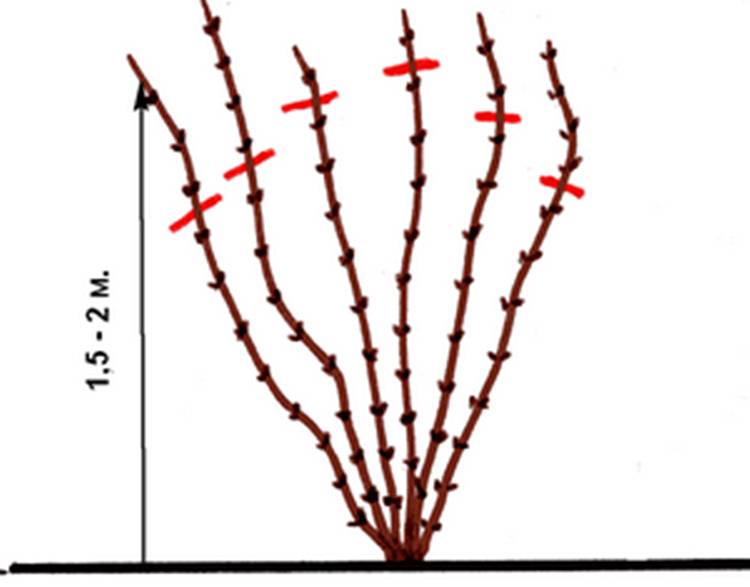

Group B. This group includes varieties that bloom twice a year: the first time flowers appear on young shoots, the second - on last year's. This group is cut much shorter, leaving the shrub height 1.5 m above ground level.
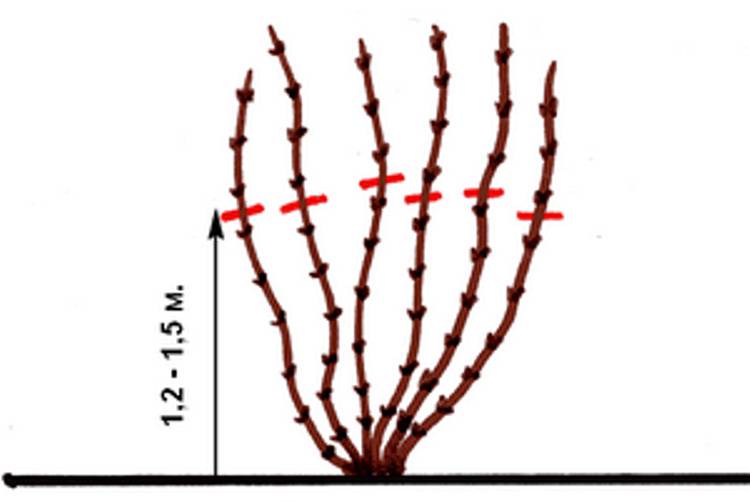

Group C. In varieties of this group, flowers appear only on young shoots. Therefore, we cut them for the winter by 2-3 buds from the ground.
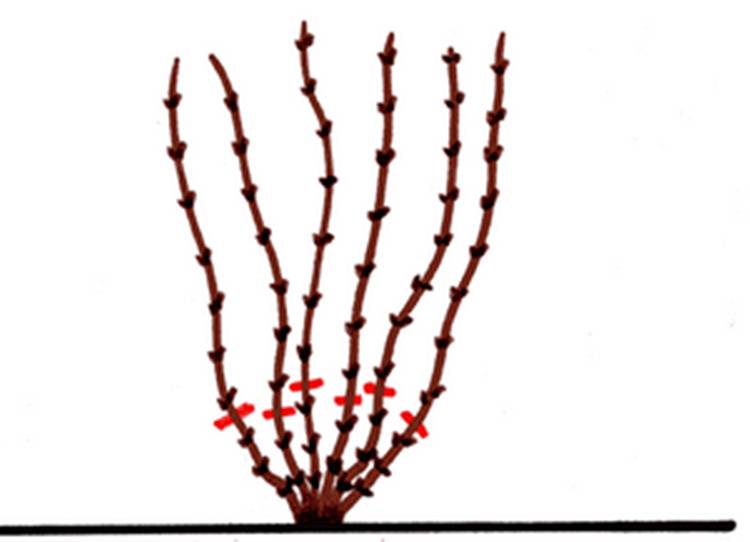

You can also use combo cropping. It is suitable for all clematis, regardless of the group. To do this, cut off the shoots after one. One branch is left long, up to 1.5 m high, the other is shortened to 2-3 lower buds.
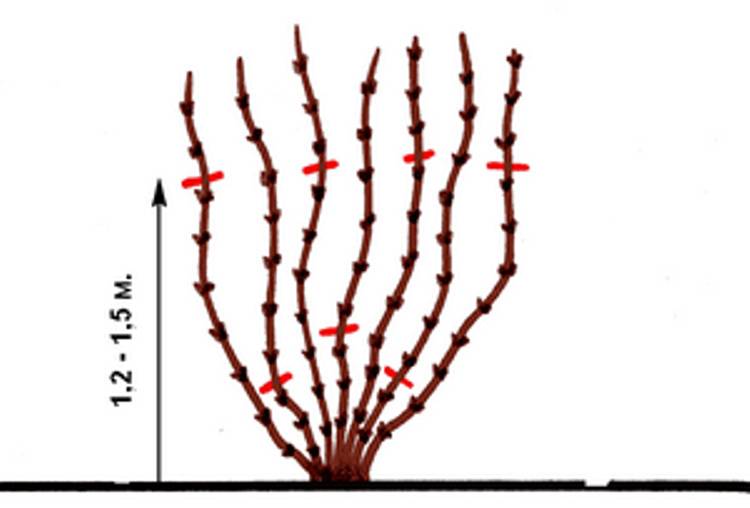

This method has several advantages:
- the plant is rejuvenated;
- suitable for all groups;
- when pruning plants from group B in this way during the second flowering period, the buds will be evenly distributed throughout the bush.
"Pruning clematis" (video):
The nuances of leaving and planting clematis Jensi Cream (Guernsey Cream)
The large-flowered variety of clematis belongs to group B. It blooms twice a season: the first flowering occurs in May and lasts until the end of July, the second in August and until the first frost. The flowers are large, ivory colored. The plant looks beautiful in a combination of dark varieties of clematis and climbing roses. The variety is tall, suitable for single and group plantings.
Jensi Cream is landed in a bright, warm place, protected from drafts and gusty winds. The soil should be fertile, light, slightly acidic. Pruning is carried out sparingly, leaving 1.5-meter shoots. The variety is sheltered for the winter in regions with a harsh climate.
The nuances of the care and cultivation of clematis Morning Sky
Large-flowered hybrid, belongs to group C. The plant is tall, grows up to 3 m in height. The flowers are pink-purple in color and reach up to 10 cm in diameter. Abundant flowering begins in July and ends in late autumn.
The variety is relatively unpretentious, grows well in a sunny place or in light partial shade. The soil must be nutritious and well-drained. A plant can grow in one place for up to 30 years. Pruning the bush is carried out in the fall, leaving shoots at a height of 2-3 buds from the ground.
Shelter of clematis for the winter
When buying these flowers, you should clarify how high their resistance to frost is, and what type of shelter is suitable for them. The main regularity of clematis is that the more elite the variety is, the more complex and beautiful its flowers, the worse it tolerates frosts and the more carefully it should be covered for the winter. And the simpler these vines are, the more resistant they are to frost.
By the way! More about clematis shelter read for the winter in this separate article.
Do I need to cover clematis for the winter
Almost throughout the entire territory of our country, clematis require shelter for the winter. And if such a procedure is not carried out, then the plant will surely freeze out. Therefore, novice growers should remember that in any case there are very few varieties of clematis that do not require serious shelter before the cold weather, but they should also be prepared for winter. How to do this correctly will be described below.
How best to cover clematis for the winter: recommendations depending on the groups
- Plants of the first group mostly require adequate cover... Most of them are not frost-resistant enough, so they should not be left to winter on supports.
- Lianas from the second group are sheltered for the winter in the same way.
- Shelter for plants from the third groupnot required.
Important! The site already has a detailed article about how to properly cover clematis
.
Video: shelter of clematis for the winter
How to identify a clematis group?
Unfortunately, it is difficult, and sometimes impossible, to determine the clematis group based on external signs. When buying a clematis seedling, you need to pay attention to the label right away, or ask the seller. Often novice gardeners simply do not know what to pay attention to, and sellers forget to say. But you can define a clematis group without a label. To do this, you need to save the entire vine by the spring, cutting it down to a meter or one and a half. Further, it needs to be covered for the winter, and in the spring, after the appearance (or not appearance) of the first flowers, you will determine the clematis group. For more information about groups of clematis, see the article: Groups of clematis and pruning for the winter by groups.
For practice, try to identify the clematis group yourself, the flowers of which are shown in the top photos.
Typical mistakes when preparing clematis for winter
The most popular mistake of novice florists when preparing clematis for winter is incorrect pruning, which is a consequence of ignorance of the pruning group, in other words, the plant belongs to a particular species. The same goes for the need for shelter.
Thus, correct pruning and shelter are very important procedures for autumn care and preparation of clematis for winter, on the correct implementation of which the growth and flowering of vines in the next season depends.
Video: preparing clematis for winter
Botanical description
Clematis, or clematis (Latin Clématis) is a perennial herbaceous or woody plant that grows in subtropical or temperate climatic zones. The plant belongs to the type of lianas and has opposite or pinnate leaves. Flowers are large, single or collected in inflorescences, bloom in spring or late summer.
Garden clematis have flowers:
- Simple;
- Terry;
- Semi-double.
The plant is considered quite simple in agricultural technology and all caring for it comes down to regular watering, fertilizing during the summer with nitrogen fertilizers and sheltering clematis for the winter.
The abundance of species and the richness of colors determine their demand for an assortment of plants in garden plots - 300 species and 2000 varieties. The plant is widely used to decorate "green" walls, gazebos, hedges and fences. Clematis is also capable of creating a dense carpet on the surface of the earth.
Browse varieties by group
In clematis, it is customary to distinguish three main groups, according to the rules of which autumn pruning is carried out.
The description of the first group should begin with the fact that it unites those varieties that bloom at the junction of spring and summer on shoots left over from last year. For example, we are talking about such types of clematis as Siberian, mountain, and also Alpine... These plants do not require shelter at all, and therefore they do not even have to be cut before the onset of frost. However, gardeners still carry out light processing at the end of flowering, freeing the shrub from diseased and weakened branches, and also shortening the shoots in case of excessive height.
The first pruning group includes representatives of the species group "Atragene"... Its varieties are formed, which are the result of the selection of various mountain species, for example, Alpine, Korean, Okhotsk, mountain, Siberian, large-petal and Turkestan. All of them are able to survive frosts down to minus 40 degrees right on the trellis.
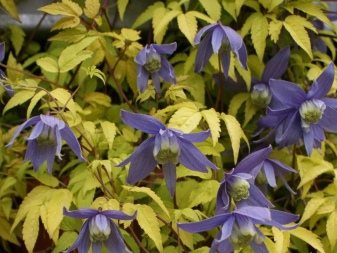

The second group of pruning includes clematis, the buds of which bloom both on last year's shoots and on fresh ones. Plants should be pruned twice a year. The first pruning is carried out on last year's shoots after the buds have faded. This is done either in May or in June, and it is last year's shoots that are removed - the fresh ones should not be touched. The second pruning is arranged in the fall after the first frost, but even before the plant has been prepared for wintering. All thin, diseased or weakened shoots of this year are cut out completely, and strong ones are shortened by one third. Further, all the shoots are rolled up in rings and laid out on the ground, after which the clematis is covered with spruce branches or special material.
Large-flowered hybrids of this group come from the species Patens, Florida and Lanutinoza... In autumn, they are shortened so that 10 to 15 nodes remain on the shoots, which corresponds to a one and a half meter plant height. In an adult specimen, only 10-12 healthy shoots are left. We are talking about varieties Dr. Ruppel, Yulka, Gladys Picard, Akaishi, Solidarity, Sunset, Miss Bay other.
The third pruning group unites clematis, which bloom only with fresh shoots, and the buds are plowed up from July to September. We are talking about representatives of the varieties "Vititsella", "Integrifolia", "Orientalis", "Zhakmana"... The shortening of the shoots is carried out to the maximum extent in order to ensure abundant flowering for the next season. Shoots are cut so that only 2-3 knots are left, moving from the ground. If clematis has not yet crossed the second year of life, then strong pruning is recommended for him, regardless of which group he belongs to.In this case, we are talking about varieties "Warsaw Night" (or "Warsaw Nike"), "Viticella", "Pink Fantasy".
Combined pruning is recommended for some clematis of the "Lanuginoza" subspecies. The fact is that in June the buds open on last year's shoots, and in the middle of summer they bloom on the current branches. You have to combine trimming of the second and third groups. In autumn, fresh shoots are slightly shortened and removed under cover, but old branches are almost completely eliminated as soon as they fade. According to another principle of combined pruning, the shortening occurs in such a way that three tiers are formed.
The first is processed at a meter level from the ground, the second - at a distance of 0.5 meters, and the third - at a mark of a couple of kidneys. After processing, the plant takes cover for the winter. In the spring, as soon as this or that shoot fades, it will have to be cut out almost completely. The emerging young branches will also be cut at different heights.
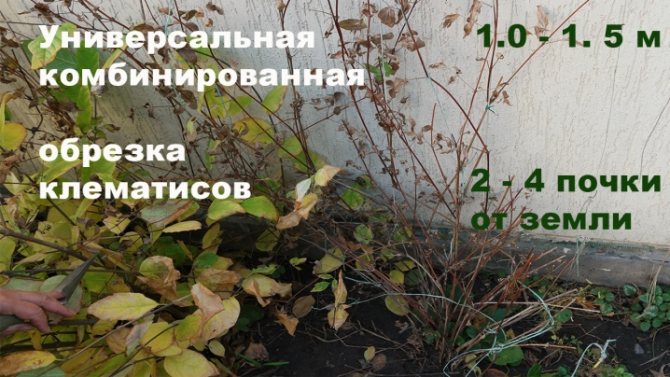

First option
The first type includes those clematis that bloom on last year's shoots. This means that it is their whips that must be preserved at all costs in the cold season. How is this type?
Unfortunately, in this case it all depends solely on the winter hardiness of the variety you are using. If you plan to grow these flowers in frosty regions, select the appropriate “breed” in advance.
To minimize the possible negative effects of cold winters, you can huddle the lower part of the bushes by 30-40 cm, using dry foliage or peat for this. Even in the case of an extremely cold winter, the bush will be able to recover from the root collar.
Types and varieties of clematis in the Moscow region
Ballerina (lat.Balerina)
One of the longest flowering clematis, liana blooms from May to September. White Clematis, Ballerina varieties are a real find for gardeners who prefer vines with large flowers, up to 15 cm.
Variety Nadezhda (lat.Nadezhda)
A Soviet variety with large, light-burgundy flowers, reaching 14 cm.The petals have a pointed shape, so the flowers, when opened, resemble stars and are clearly visible.
Fresh articles about garden and vegetable garden
Nikolay Rubtsov (Latin Nikolaj Rubtzov)
The variety is distinguished by lilac flowers, on the petals of which the contour is repeated with stains of the same color. Plant height does not exceed 2.5 meters, flowers are large, up to 17 cm in diameter. Clematis varieties Nikolay Rubtsov bloom from May until the end of summer, continuously replacing one flower with another.
Clematis Ville de Lyon (lat.Ville de Lyon)
One of the brightest clematis, the flowers of which are painted in a rich red color with a fuchsia tint. The petals are ovoid and unevenly colored, giving the flowers the exotic look of a tropical plant.
Features of the shelter of clematis in different climatic zones
Clematis can be grown both in the Middle Lane and in Siberia, the Urals, and the Leningrad Region. The principle of sheltering plants in the northern regions is about the same as in the Middle Lane. A good layer of snow serves as additional insulation.
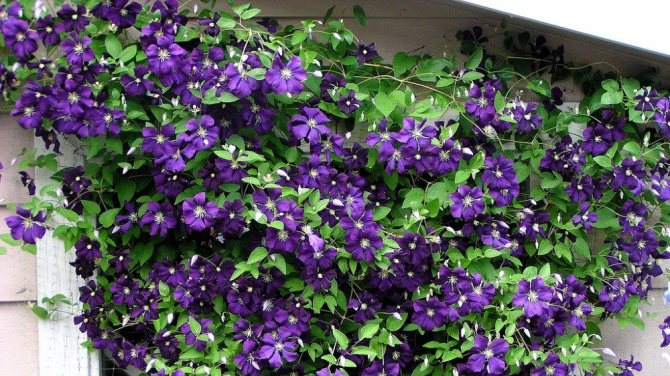

Clematis must be additionally insulated with snow
When growing clematis in the northern regions, it is advisable to give preference to frost-resistant varieties (third pruning group) or botanical species of clematis.
When to prune clematis: in spring or fall
The procedure can be carried out both in spring and autumn. However, seasonal pruning has its own nuances and goals, so each gardener independently determines the optimal pruning time for this blooming and climbing vines.
Important! In certain varieties, the buds are formed in the fall, which means that spring pruning cannot be carried out, and vice versa. Therefore, always carefully read the description of the plant on the package.
Video: a detailed lecture on pruning various types and varieties of clematis
Pruning in spring
If you decide to prune clematis in the spring, then this should be done in early spring, in other words, the procedure must be completed before the buds awaken and the active sap flow in the plant begins.
In the spring, sanitary and thinning types of pruning are also required.
By the way! The main advantage of pruning clematis in the spring is the fact that you will be exactly sure how much it is worth shortening clematis, which buds have woken up, and which ones have frozen over the winter.
Therefore, if you deliberately leave the vine on the trellis, although it is recommended to cover it, then pruning should be done only in the spring.
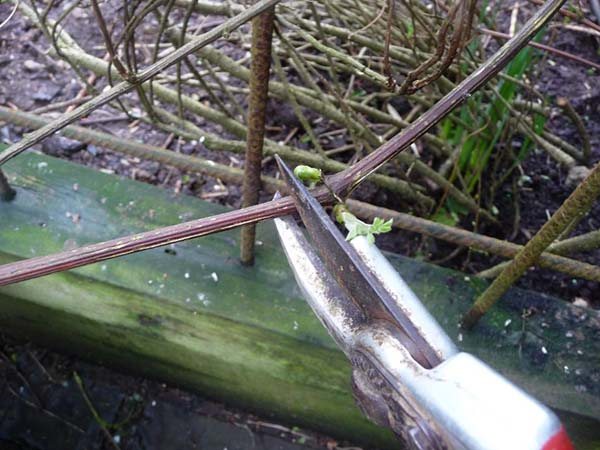

Important! After spring pruning, remember to secure the vine to a support. Thus, this flowering shrub is perhaps the most beautiful to grow.


Pruning in the fall for the winter
The timing of pruning clematis in the fall is October-early November, in other words, before the first frost.
The purpose of the autumn pruning of clematis is to prepare them for winter, and specifically for shelter. But, as you know, only vines of 1-2 groups are subject to shelter, however, many gardeners during this period also prune 3 groups blooming and climbing vines.
How to unhook vines from a support
Before winter, the branches of the plant must be carefully removed from the support. To do this, first, all dry leaves are removed from the stems, then the plants are untied from the support, the processes entangled behind the fence are cut off. By unhooking the clematis from the support, you can prune the plant at the same time. The branches are slightly shortened during the removal process, leaving a stem at least 1.5 meters long.
In order to make it easier to care for clematis in the fall, it is advisable to tie it to a support on only one side in the spring.
With this method, the branches are not intertwined around the pipe, but only tied to it with strings.
When exactly to plant
When exactly it is possible to transplant clematis to a new place, many gardeners are very interested, especially beginners. As for the autumn, the transplant is best done in the second half of September, the transplant should take place before the first frosts begin and the plant has time to root properly. But in the spring, the end of April or the beginning of May is perfect. At this time, the ground will already be warmed up enough for the clematis sapling to feel great. Clematis itself does not like transplants. An adult plant can be transplanted to a new place only in one case, if the previous place was not chosen correctly. But still, the liana will not like it very much, therefore, after the transplant, she will need especially careful care in order for it to quickly restore its vitality. Another reason for transplanting can be for the purpose of rejuvenating the plant, and if the plant is sick, and can no longer grow in its old place. Moreover, before transplanting a diseased plant, a new place must be shed with a solution of such a drug as "Tricoflora", and after that the earth must be sprinkled with clean wood ash.
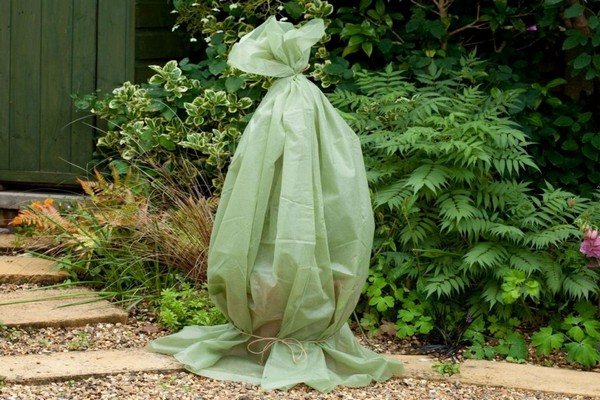

When transplanting vines in the fall, it must be cut off. The bush needs to be dug up and moved to a new hole along with a lump of earth on the roots. And if you want to propagate the plant, then you need to shake off the earthen lump and divide the bush into several equal parts, and plant them in a new place. if the roots are very long, then they can be shortened before planting, and after planting, be sure to water the plants well. When transplanting young plants, dividing the bush is not necessary, but starting from the 8th year of life, division into at least two parts is simply necessary. In principle, clematis is not whimsical, but nevertheless, care for it is necessary. To do this is quite simple, all that is needed for this is to water, loosen, remove all weeds and make all the necessary fertilizing in time. You also need to properly prune this wonderful plant.This is necessary in order to protect the vine from insects, diseases, and save it from winter freezing.
Pest control
In order to prevent the multiplication of diseases and small pests in winter, in the fall it is necessary to carry out preventive treatment not only of the trunk circle, but also of the root part of clematis. You need to do this procedure immediately after pruning.
A solution of Bordeaux liquid (1%) is suitable for processing. Some growers use a solution of ferrous sulfate (3%). The drug "Fundazol", diluted according to the instructions on the package, also helps fight fungal diseases that can attack clematis vines.
Gardeners reviews
Tatiana, 32 years old, Podolsk
In our garden, the Andromeda bush is the most spectacular. In the first wave of flowering, it is especially densely covered with magnificent double flowers. It grows near the gazebo, braiding it almost completely. Penumbra is created by an old spreading plum. At the end of October - beginning of November, I carefully remove the lashes from the supports and cut them in the 2nd group, twist them in the form of a hoop and put them on wooden boards, top them up with a pre-prepared mixture of birch and oak leaves. I cover the resulting slide with agrofibre. In winter I pour a large snowdrift on it, and in spring I gradually rake the shelter. First, at the end of April, I make holes for ventilation, and at the beginning of May I remove the top layer. For the eight years that he has been living with me, he has never froze to death and no kidney damping has been observed. It is not difficult to take care of the plant, it winters well, does not get sick and blooms very well every year.
Sergey, 58 years old, Korenovsk
I have been growing Polish clematis on my garden plot for many years. "Varshavska Nike" in our area begins to bloom in May. Then, after a short break, comes the second "flowering tide", which lasts from the beginning of July to the end of September. In preparation for winter, in the month of November, I completely remove weak and dried shoots, and cut the strongest of the young by a third and twist them in a ring. Laying them on the tiles, I cover them on top with spruce branches. Additionally, I cover it with any non-woven material so that there is a gap from below for air circulation.
Natalia, 33 years old, Kalachinsk
To decorate the low stone hedge of our summer cottage, I was approached by the undersized "Tex" variety from the Zhakman group. On the walls, we fixed the metal nets protruding forward and let shoots along them in a horizontal direction. The plant does not come into contact with the wall, which excludes the reproduction of mold fungi and harmful insects, in addition, it is convenient to prune if necessary. It turned out both beautiful and useful. Clematis bloom from June to September on the shoots of the current year. When preparing for winter, I shorten all the stems radically - up to the 4th bud above the surface of the soil, cover the remaining aerial parts with sheets of roofing material, which I cover with peat from above. The variety is quite frost-hardy, easy to plant and care for, and also perfectly survives in our cold climate. True, this clematis has a tendency to "burn out" flowers, but in our short summer period, sunburn is not terrible for it. Not flowers, but just a real "outlet"!
Types of pruning
Interested in the intricacies of preparing clematis for winter, you need to deal with the existing types of autumn pruning. Such activities are intended for the normal development and formation of the root system. Depending on the purpose, cropping can be:
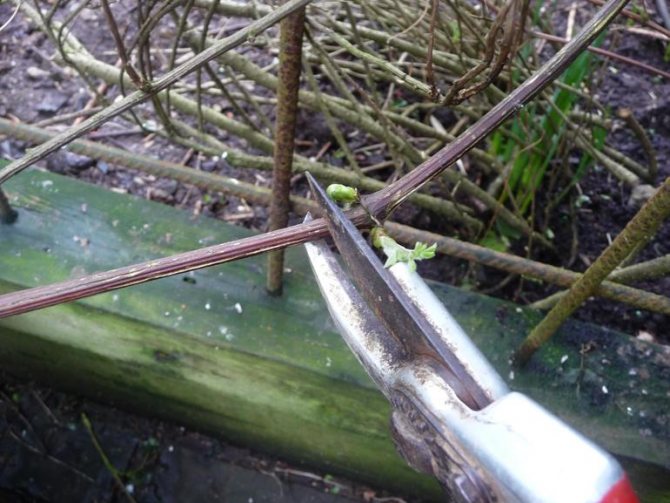

- Sanitary - means cleaning the culture from damaged or dead lashes.
- Formative - used to shape the bush, improve metabolic processes and flower growth.
- Winter - allows bushes to cope with winter cold and strengthens resistance to freezing.
If you cut off such a garden plant in time, this will seriously simplify further preparation for the cold and protect it from frost.In addition, the correct implementation of the procedure is the best stimulation of the rejuvenation of old shoots. With the arrival of spring, young shoots will grow on them, on which flower buds will form.
Taking shelter in spring
With the onset of spring, when severe frosts have passed, clematis slowly open. The shelter is gradually removed from April to May. Plants open during the day, in dry and sunny weather.
At first, clematis are only slightly opened for a couple of hours and allowed to bask in the sun, and they are warmed again at night. Plants need to be given time to adapt to new conditions. Then they remove the film, remove the dry branches, raise the vine and tie it to the support. The last thing to do is to remove the mulch from under the stem.
Clematis is a magnificent curly perennial flower of lilac, blue, pink and white shades. To save clematis and enjoy blooming next summer, we will share tips on when to prune clematis for the winter and how best to do it. This question causes confusion for many. For this wonderful decoration of the garden plot, you need pruning clematis for the winter and shelter.
Modern growers believe that it is possible to grow clematis without shelter for the winter with deep planting. The main thing is correct agricultural technology, in which the flowers ripen well, harden and winter well even under a small light shelter. As practice has shown, clematis that grow near the walls of the house and are protected from the winds winter well.
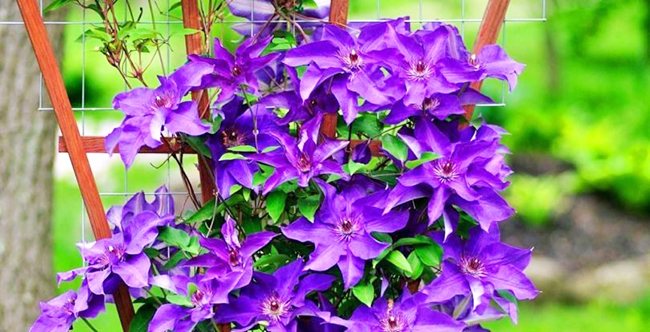

The main task is to preserve the center of tillering, then the plant perfectly renews itself and blooms every year.
- The most non-frost-resistant clematis are clematis of the 3rd pruning group, since flowers on them develop on the shoots of the current year and which are recommended to be cut in autumn.
- Shoots of clematis of the first pruning group (flowers develop on shoots of the previous year) are relatively frost-resistant and hibernate without much damage. If last year's shoots are damaged by frost, the shoots of the current year bloom, but only a little later.
At a temperature of about 0 ° C, nutrients from the leaves and the upper part of the shoots are transferred to the buds, so there is no need to rush to cut the leaves and shoots early in the fall. When the temperature drops to –2… –5 ° C, the water content in the cells decreases, the activity of physiological processes decreases, which is characteristic of the dormant period. If the climatic conditions are favorable before the winter hardening, then the wintering of clematis goes well.
To preserve nutrients in plants for the winter in late autumn, it is advisable to stop their flowering and growth. To do this, in a timely manner, even during the growing season, proper care is needed in the fall:
- apply correctly selected groups of fertilizers (without nitrogen, since nitrogen leads to an increase in green mass),
- timely pruning (the time when to prune clematis in the fall depends on which group it belongs to 1, 2 or 3),
- timely removal of plant fruits,
- pinching growing shoots in autumn.
When to prune clematis in the fall, timing:
- shortly before the onset of cold weather - clematis should be cut off in late October or early November (depending on the region), and it is better to do this in dry weather;
- when to cut clematis for the winter in the Moscow region - the end of October.
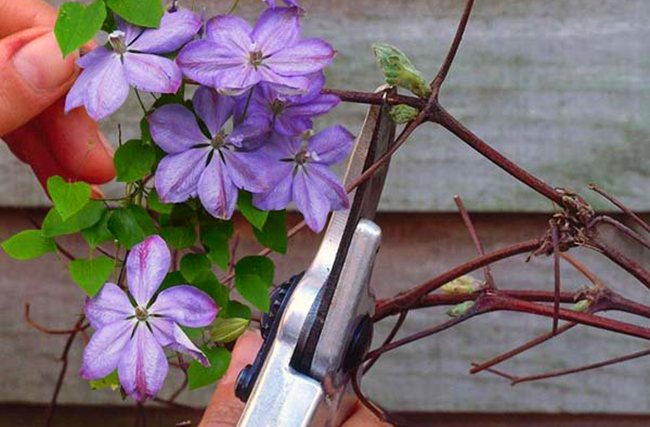

How to properly prepare clematis for wintering
In order for clematis to successfully overwinter, it is necessary at the end of August to carry out the final feeding with phosphorus-potassium fertilizers (for example, Borofoskaya). This dressing promotes the ripening of the shoots.
You can also spray with Siliplant fertilizer with microelements and bioactive silicon. This drug has a fungicidal effect, protects the plant from diseases. Strengthens the tissue of the leaf plate, which makes it more resistant to mechanical stress (damage by pests) and prepares the plant for winter.
It is not superfluous to introduce wood ash into the tree trunk circle of the plant, followed by incorporation into the soil of 80 - 100 grams per square meter. This dressing reduces the acidity of the soil and enriches it with potassium. For the prevention of fungal diseases, it is very good to shed soil under the bush (20 grams per 10 liters), or.
Second option
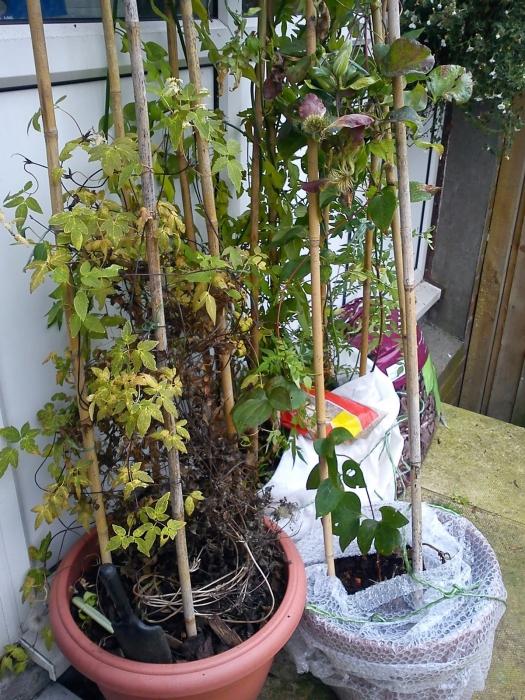

And how to shelter clematis, which belong to the second group, for the winter? It includes varieties with unsatisfactory frost resistance, blooming on the shoots of both the current and last growing season. Their shelter should be approached with the utmost responsibility.
Before the onset of frost, you need to cut the lashes at a height of about a meter, untangle them, trying not to damage or break rather fragile shoots.
The base of the bush is also covered with a layer of foliage (all the same 30-40 cm), and the lashes themselves are rolled up in a ring, laid along this mound, after which they are also sprinkled with foliage or peat. From above, this structure is covered with tar paper or special material from shops for gardeners.
The third option
How to cover clematis of the third varietal group for the winter? In fact, in this case, everything is as simple as possible. The fact is that this group includes those varieties that bloom only on the shoots of the current growing season. Naturally, it makes no sense to approach their shelter too responsibly.
Before covering clematis of this type, its lashes are simply cut off at a height of 15-20 cm, after which a mound of 30-40 cm from the ground is poured over the root collar.No additional measures are no longer required.
Regardless of which method of shelter you used, after the onset of stable warm weather, you need to clean up the mound above the root collar, trying not to damage the fragile plant.
And further! Don't forget about rodents! These small and gluttonous pests are capable of destroying all your flowers, and therefore it will not hurt to scatter poisonous baits near the whips sheltered for the winter.
Here he is, clematis. Winter maintenance will keep your garden blooming and beautiful at all times.
Which clematis need to be cut for the winter, and which ones winter well and so? How to put together a safe, warm and breathable shelter, and how, entangled in clematis "intricacies", not to ruin a charming flower? Let's figure it out together!
Most clematis can be safely called frost-resistant. However, after winters with changeable weather, frequent thaws or poor snow cover, these flowers may die or not bloom. The reason for this is not the frosts themselves, but the improper preparation of the plant for winter.
Briefly about clematis
Clematis can be planted in open ground not only in spring but also in autumn. If you decide to plant in the fall, then you need to do it correctly and strictly at a certain time. It is necessary to plant clematis in the second half of September, before the first autumn frosts begin. At the very beginning of September, planting is in no way impossible, otherwise the plant will have time not only to take root, but also begin to grow actively, which can only harm the plant, because the risk of freezing during winter frosts is greatly increased. If you want your plant to grow healthy and beautiful, then you need to grow it correctly and take proper care. All the requirements of this plant must be fulfilled. One of the basic rules is the correct choice of the place where clematis will grow for many years, this condition must be met because this vine absolutely does not like transplants, and is capable of growing in the same place for decades. But this is natural if the place suits her in all respects. In the area where the liana grows, there should be a lot of light, but the sun's rays should not be direct, but scattered. Also, there should be absolutely no wind or draft on the site.You should not grow a liana next to any buildings, especially capital ones, as well as it, and any other perennial plants, is contraindicated to grow next to any metal structures. If you grow clematis next to some kind of buildings, then it can be either a summer wooden gazebo, or a wooden fence. Be sure to keep in mind that the soil on your site should not be acidic, otherwise the plant will not grow. The vine will grow best in any elevated place where water does not stagnate at all.
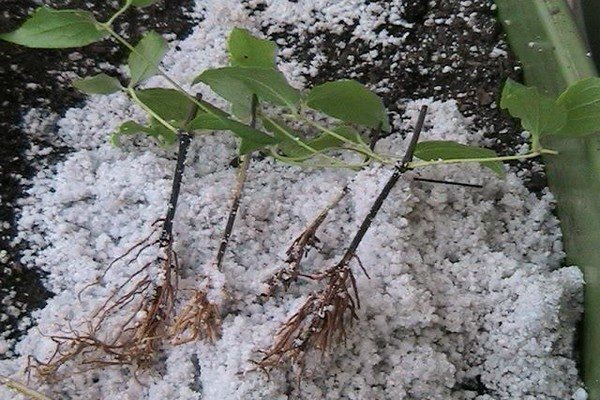

Young plants
In addition to caring for old plants, every gardener should know how to prepare clematis for winter, which is 1-2 years old. To keep the culture from freezing in the open field, you need to observe the following measures:
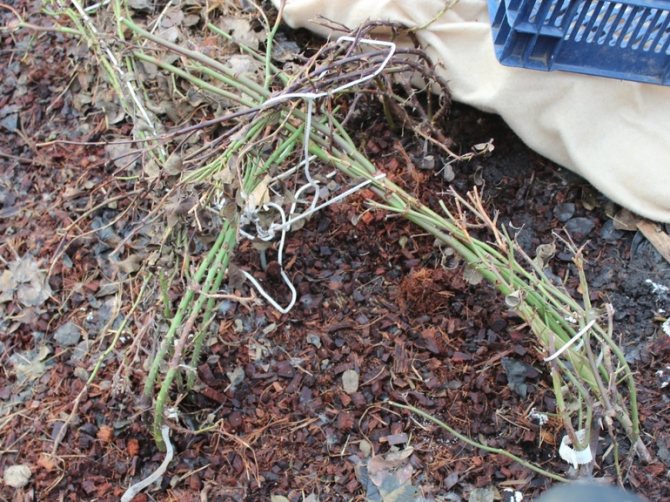

- With the arrival of autumn, the lashes are cut off, and only 3-4 buds are left on the shoots. Moreover, the intensity of pruning remains the same for all varieties and methods of forming peduncles.
- The bush is covered with branches, as well as polyethylene, which will protect it from excess moisture. Before that, a pile of earth is poured over him.
- A small young clematis is covered with a large flower pot, on top of which spruce branches, wood shavings or sawdust are placed.
As for the specific care of clematis during the winter cold, then with proper and timely shelter, it will not be needed. However, if the temperature drops to critically low rates, and there is no snow, you will have to fill the bushes with any insulating material, preferably spruce branches or hay.
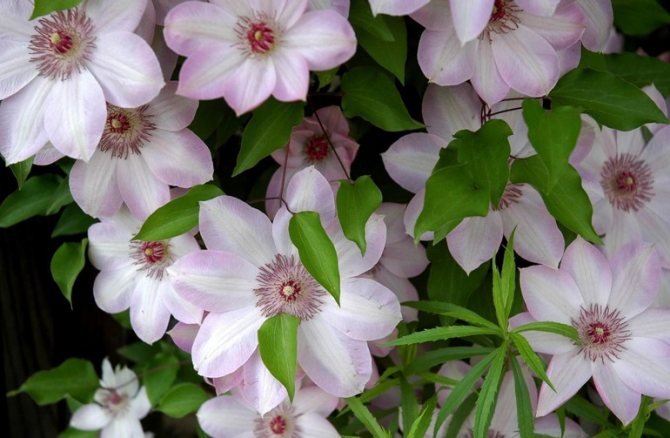

Also, the likelihood of the appearance of small rodents, usually mice, under the shelter cannot be ruled out. If traces of their activity appear near clematis, it is necessary to scatter seedlings nearby or install mousetraps. Otherwise, the rodents will destroy the healthy sprouts of the flower.
The difference in the shelter of clematis with a different pruning group
When sheltering clematis of the first and second pruning groups, it is necessary to take care not only of preserving the root system, but also to ensure a good wintering of the stems, which should bloom next year.
When covering the clematis of the third pruning group, it is necessary to cut off all shoots and insulate only the root system. Shelter in this case turns out to be simpler and less costly.
We cover species, botanical clematis less carefully. It is enough to throw a small layer of spruce branches on the stems removed from the support.
Species clematis are more resistant to frost
Useful Tips
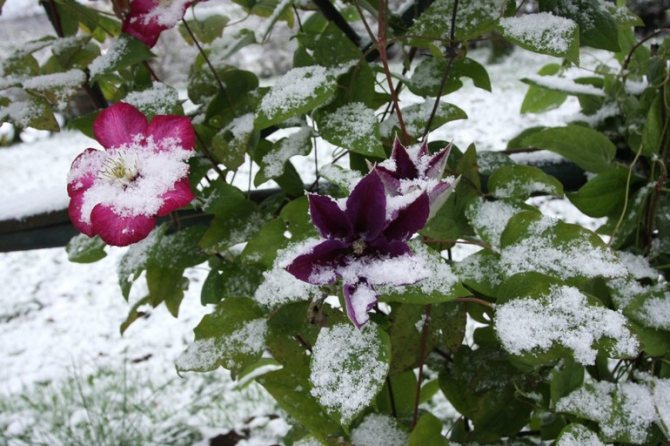

In the spring, clematis needs to be provided with balanced care, which will allow it to quickly recuperate after a long winter, start metabolic processes and begin to form new shoots. In the spring, the culture needs to be watered abundantly, as well as fed with all kinds of mineral or organic fertilizers. They should contain a lot of nitrogen, potassium and phosphorus, as this is necessary for a set of green mass and rapid growth.
Clematis are the most beautiful garden flowers that surprise gardeners with their unsurpassed beauty and long-lasting bloom. But, like other representatives of exotic flora, they are a rather capricious plant with high requirements for keeping conditions. Therefore, before you buy seedlings and plant them on a private shrinkage, you need to make sure of their winter hardiness and ability to grow in the middle lane. Such varieties as "Leningradsky", "Cardinal" and "Clematis Beata" are perfect for such an area.
To grow healthy and beautiful clematis in the garden, you need to properly care for them, as well as do all the procedures related to pruning, storage in winter, opening in spring, and so on. In this case, the vine will thank the grower with unsurpassed flowering and good health.
It is advisable to insulate clematis for the winter, otherwise these plants will die from frost.Before sheltering, the vines are cut off, their stems are treated with disinfectants. Clematis are insulated with hilling, dry branches and artificial moisture-proof materials. Plants are afraid of severe frosts, but if they are not insulated for the weather, they can wither and rot.
Removing thermal insulation
You can start removing the shelter from the bushes upon the return of the warm season, even if there is a risk of returning night frosts. The real problem for the plant is excessive moisture or unexpected thaws. Such phenomena cause damping of the sprouts due to the lack of fresh air supply. In most cases, the insulation layer is removed in April, but not all at once, but a small part, continuing the opening procedure until May. Clematis must gradually adapt to new conditions and begin active recovery after winter.
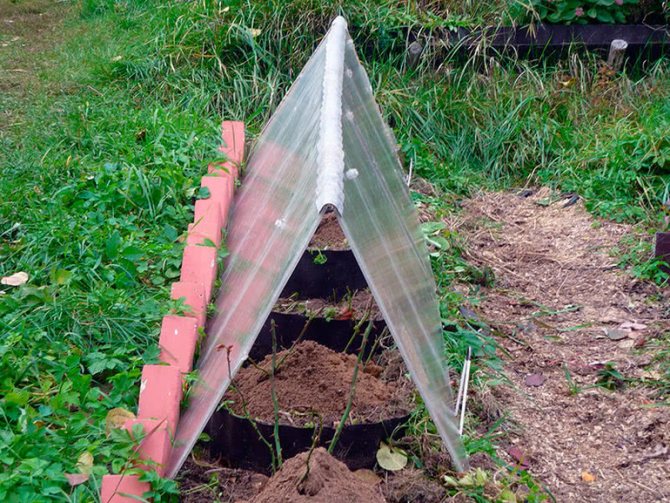

The process of removing the shelter takes place in several stages, which are divided by day. First of all, you need to open the ventilation holes, making sure that the air temperature is consistently comfortable. It is possible to remove the polyethylene and the upper part of the insulation after the arrival of stable heat, when the risk of night frost or snow fall will be completely excluded.
But do not rush to remove the hilling layer. The plant must undergo full adaptation to the new environment and only after a couple of days can the embankment be removed. The remaining soil is removed only after the threat of repeated frosts has passed. Often in the spring, the gardener discovers that the flower could not endure the winter and was gone. But this does not mean that you need to dig up the root as quickly as possible, since it is quite possible that in a few years it will recover and give healthy shoots. This can be facilitated by the activation of dormant kidneys.
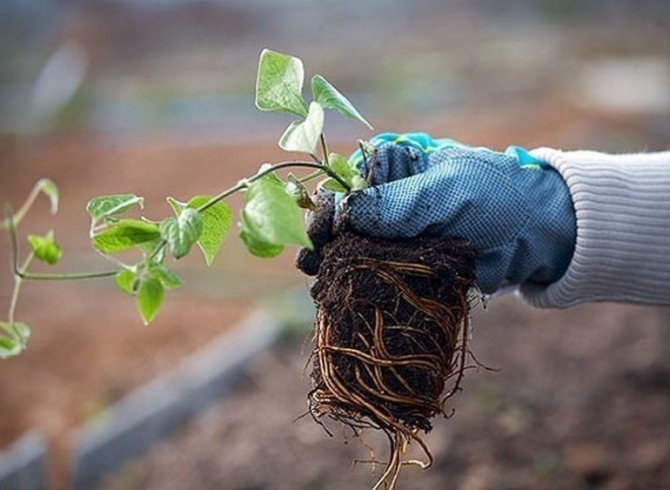

If during the summer season clematis does not show signs of life, it must be reliably insulated in winter. With the arrival of spring heat, it can sprout. Some gardeners transplant clematis after removing the shelter in the spring to a new place. It should be sunny and protected from shade with fertile soil.
Before planting the plant in new soil, you need to loosen it deeply. Such a measure is necessary for good drainage, which will be a good stimulation of productive growth and crop development. It is imperative to install trellises, which will play the role of support for the rapidly growing vines.
How and when to trim correctly?
It is believed that pruning clematis in groups is more relevant for specialists, and amateurs, and especially novice gardeners, need not delve into the intricacies and adhere to general rules. In the fall, the shortening of the shoots is the same, regardless of the group. For the winter, it is better to shorten the shoots so that one or two buds remain above the ground. This allows the root systems to wake up faster in the spring, and then bloom more actively.
It is customary to combine pruning with pinching; it can be carried out in the summer at the beginning of June. This procedure promotes better branching of plants. EIf clematis belongs to the first or second group, then it should be pinched so that 30 centimeters are kept from the ground to the selected mark. Further, when the lashes grow up, the height should be increased to 50 centimeters. Clematis from the third group are pinched for the first time at a height of fifteen centimeters, then at around 20-30 centimeters, and then at a height of half a meter.
The pruning itself is carried out using a conventional pruner or a sharpened knife. The cut should be done in such a way that at least 5 centimeters remain between it and the nearest kidney. It is important to make an oblique movement of the tool so that moisture does not remain in the resulting place, which can provoke the appearance of rot.
In addition, we must not forget about the disinfection of the point, especially if one plant is processed after another.
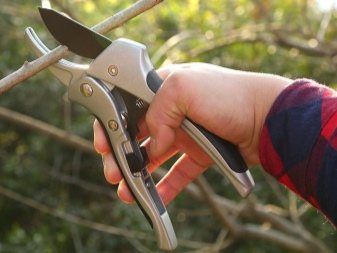

As a rule, a healthy and properly developing clematis has 10 to 15 lashes. However, in some species, the number of shoots is significantly increased, and therefore they need to be thinned out in order to avoid thickening. It is better to do this after clematis has flowered. All plants also require sanitization, which can be done regardless of the season. Broken or diseased branches are removed immediately.
When the snow melted
With the onset of spring, clematis, which no longer need shelter for the winter, gradually open. The construction that prevents freezing is removed in several stages: a thick layer of snow is removed in layers. Several ventilation openings are made into the shelter, and only after the danger of frost has passed and the snow cover has completely disappeared, the film is removed to prevent the shoots from drying out. The hillock and spruce branches are removed gradually to harden the plant. After that, the folded shoots are carefully lifted, spreading on the supports, and the sand layer is leveled to a thickness of 5-8 cm above the center of tillering.
If, after removing the shelter for the winter, it becomes clear that clematis has died, then such bushes do not have to be immediately eliminated. A dead plant within 2-3 years can "go from the root" and recover. Such clematis are also sheltered for the winter.
With the end of the summer season, the moment comes for the shelter of heat-loving plants. Clematis are no exception to the general list. It is extremely necessary to "conjure" over them, since the vine (this is how the name of the flower is translated from Greek) is from southern Europe and can hardly endure the harsh climate, and warming flowers for the winter helps them withstand unfavorable conditions. Our article is devoted to what to do before the shelter, when and how to properly cover and take off the cover in time.
Good care in autumn - successful wintering
Already at the end of summer, it is recommended to start preparing for the coming cold weather. To do this, you need to take the following steps:
- From the second half of August, it is necessary to stop feeding the plants with nitrogen-containing fertilizers, including complete mineral mixtures, which also contain nitrogen. This applies to both clematis continuing to bloom and the group of late blooming ones.
- In the first half of September, it is imperative to make a top dressing, including phosphorus and potassium. It will strengthen the vine, promote the development of new shoots, and also prepare it for winter.
- Before the onset of constant frosts, in 20 - 30 days, pruning of the bush is a mandatory step. In this case, the air temperature should be approximately +10 degrees.
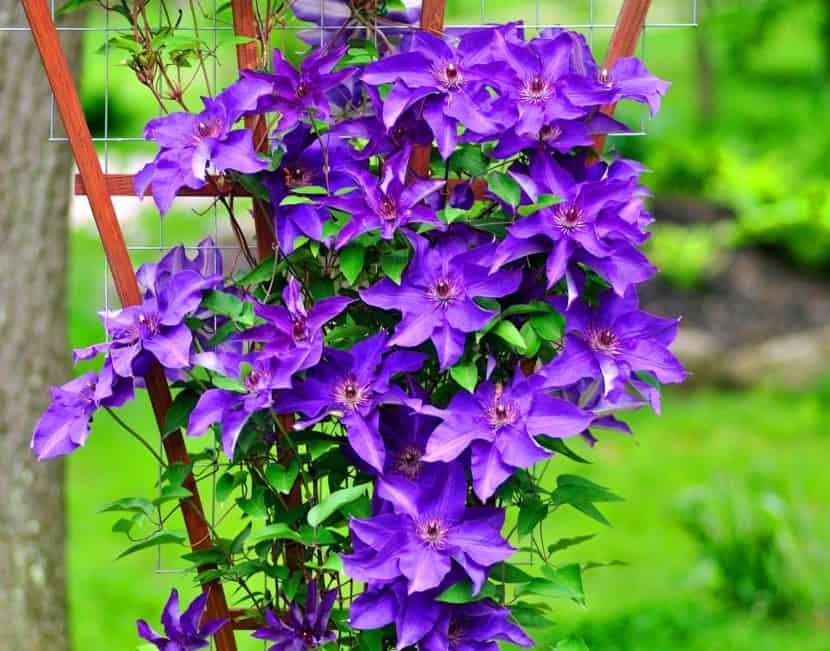

How to prune clematis of different groups
Each variety has its own distinctive characteristics. Based on them, and on the belonging of the plant to a group by the type of flowering and pruning.
- The largest first group, blooming 2 times per season, is necessarily cut off, but not significantly.
- The second group, which blooms on last year's shoots, is cut off quite a bit and does not form in the autumn.
- The third group of clematis, in which flowering occurs on the shoots of the current year, needs a full-fledged autumn pruning.
Despite the division into groups, the second and third are very slightly different from each other. There are exceptions in both groups, and clematis, which are considered to bloom only on last year's shoots, are able to bloom again on young ones.
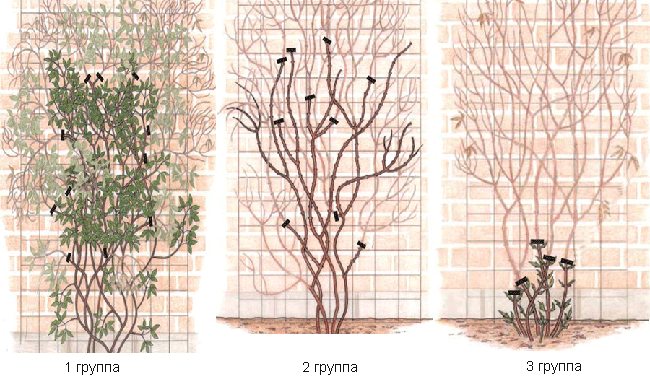

Sanitary pruning
This procedure is carried out on absolutely all clematis of any varieties. Even if you are not going to conduct a group formative.
- All fallen and dry leaves must be collected within the growing radius of the bush and burned.
- Dry shoots are also destroyed.
- Last but not least, you should inspect the entire bush and remove shoots that are not productive, give excess density, and also with signs of infections and diseases.
- Some growers then additionally process the vine with 1% Bordeaux liquid or Fundazol.
In clematis belonging to the second group, shoots that have formed in the summer season should be left. And so that the plant does not get sick and does not catch the infection, then it is necessary to remove diseased and dried shoots.
Depending on belonging to a particular group and variety, sometimes the entire aerial part is trimmed, leaving only 2 - 3 buds (Integrifolia, Manchurian, Texan, Vicirella, Zhakmana).
Pomegranates with large flowers of the most popular varieties today are cut, but very little. It is recommended to leave from 10 to 15 healthy buds on the shoot, that is, shoots are left about a meter or one and a half high.
If you do not know what sort of clematis is growing, then do not rush to prune, but wait for spring. Then it will become clear to which group the plants belong - some will have dried shoots, while others will have healthy ones with buds.
This option is also possible: all shoots are shortened by half a meter. Provided that the variety and group are unknown.
Recommendations
If the clematis variety immediately after planting develops only due to a single stem, then it should still be cut off before wintering. You need to shorten it quite strongly, leaving just a couple of healthy kidneys. Due to this, next year clematis will begin the development of basal shoots and the growth of shrubs on the sides.
In plants of the third group, one or two shoots can sometimes be left without pruning. provided that the climate in the existing zone is mild and without sharp temperature fluctuations. These strong shoots will begin to bloom in the spring, while the rest will delight with opened buds, starting in July and until mid-September.
Many amateur gardeners are concerned about the question of whether it is necessary to cut seedlings when planting directly. Most experts give a negative answer, despite the erroneous recommendations encountered to shorten the growing lashes. In a properly developing seedling that has reached the age of two, the root system adapts well to the new situation, and the shoots have grown enough, so pruning any parts does not make sense. However, in young seedlings, you can pinch the tops of the shoots in order to further stimulate tillering.
When pruning, when thinking about the number of nodes left, it is important to understand that a large number of buds will lead to more intense flowering, and a smaller number will give a larger diameter of opened buds.
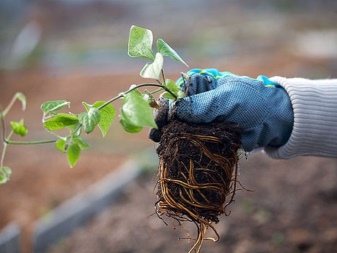

What is important to know about clematis pruning, see below.
Undoubtedly, pruning is a significant element of clematis care in a personal plot. The picturesque liana of bright and cheerful colors, loved by many gardeners, needs it almost every summer season. About when it is better to prune, how to do it correctly, about pruning after planting, in groups, as well as about combined pruning of an unknown group, will be discussed in our article.
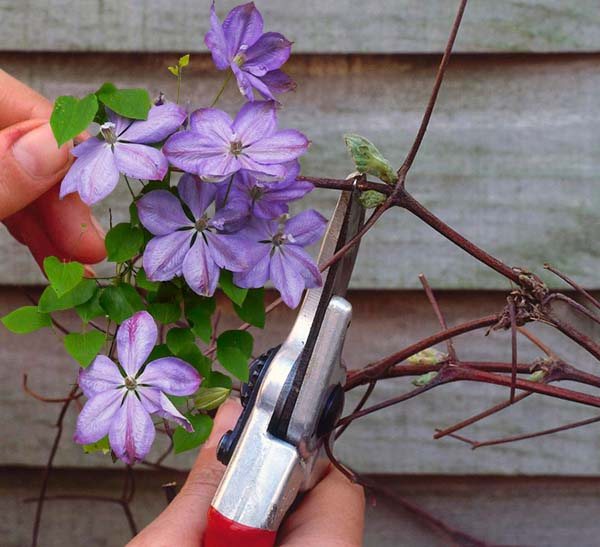

Note! One of the main reasons why clematis do not bloom or do not bloom very abundantly is their incorrect pruning.
Preliminary preparation for shelter
How to cover clematis for the winter correctly? In late October - early November, it is necessary to huddle the bush to a height of 10-15 cm. It is best to use a dry peat substrate for this (2-3 buckets per bush).
Clematis must be spilled
It is necessary to use peat with a neutral or slightly acidic reaction, since clematis do not like acidic soil. .
You can use compost or humus, but it shouldn't be very wet.
Before the onset of severe frosts, the vine is removed from the support, cut according to the characteristics of the variety and laid on the ground. To exclude the contact of the plant with cold, moist soil, a piece of geotextile, a substrate for a laminate or just a wooden board is placed under them.
From above, clematis lashes are covered with spruce branches, dry fallen leaves, dry sawdust.You can throw a piece of any covering material over this shelter.
To create an air gap, a wooden or plastic box is placed on top of this shelter. Additionally, you can put a piece of roofing material on top. In winter, snow is thrown over the clematis planting sites.
If clematis are planted with roses, an air-dry shelter can be used. To do this, metal or propylene arcs are installed on the ridges, on top of which any covering material is laid in two layers. To prevent it from getting wet, it is covered with plastic wrap on top. Such a shelter is convenient because it can be opened from the ends during a thaw. Clematis hibernate with roses with this method, the shelter is excellent.
general information
Because of their delightful appearance, clematis can even compete with rose bushes, orchids, or other lush flowers. But many gardeners refuse to plant this vine, which is explained by a simple reason - she is too capricious and picky about the conditions of detention... The main difficulty of cultivation lies not only in specific care, but also in the need to prepare the crop for wintering. In order for the plant to survive in the middle lane, it needs to provide a reliable shelter. It is created taking into account the climatic characteristics and varietal characteristics of clematis.
Care in the fall and preparation for winter are closely interrelated, so you need to start preparatory work in August. If you do not adjust the care and do not take appropriate measures, the magnificent steeplejack will not be able to survive the arrival of cold weather.
At the preparatory stage, it is necessary to carry out the following activities:
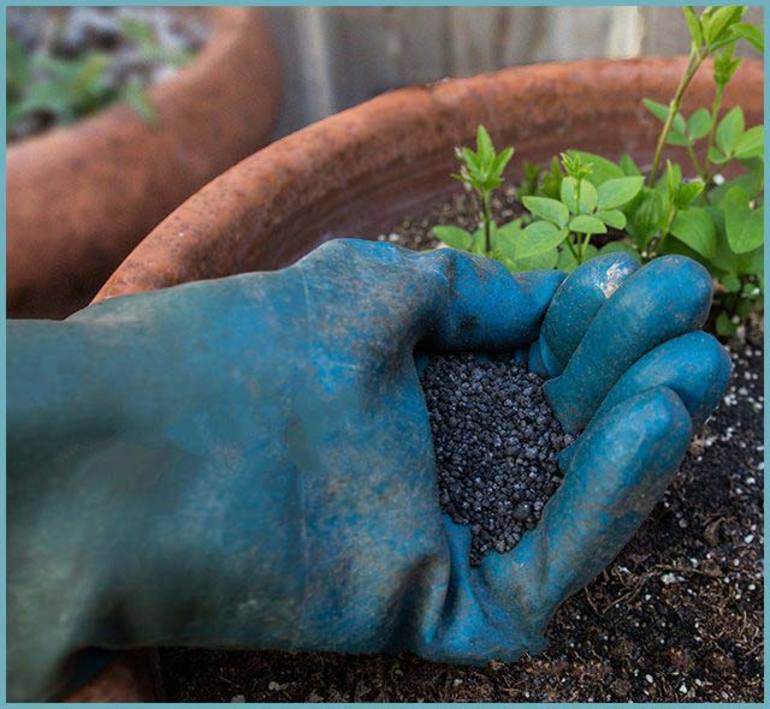

- At the beginning of August, the regime for applying top dressing to the soil should be revised, abandoning nitrogen-containing compounds, as well as mineral mixtures containing this element.
- In September, all varieties of lianas are fed with phosphorus-potassium fertilizers, which contribute to the rapid maturation of shoots, as well as the effective development of immunity before winter.
- A couple of weeks before the onset of persistent cold weather with a temperature below 10 degrees, you should start trimming.
The preparation process for wintering consists of several stages. Among them:
- Pruning.
- Treatment.
- Warming.
It is important to have time to spend them long before the arrival of cold weather, preferably in late August or early September. In the autumn, the bushes and the soil around them are treated with foundation, diluted in 10 liters of water, as well as wood ash. The ground around the creeper is carefully loosened to a depth of 15 centimeters, and the bush itself is covered with peat, humus or compost.


